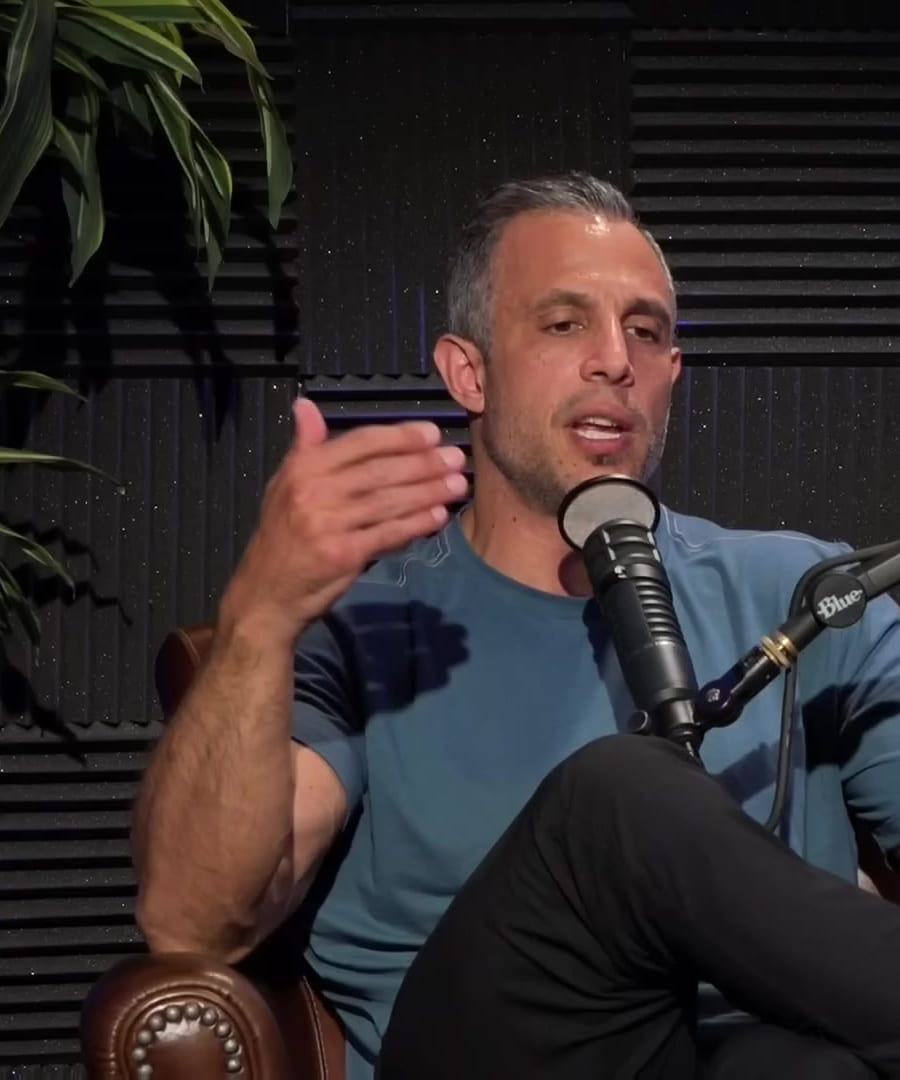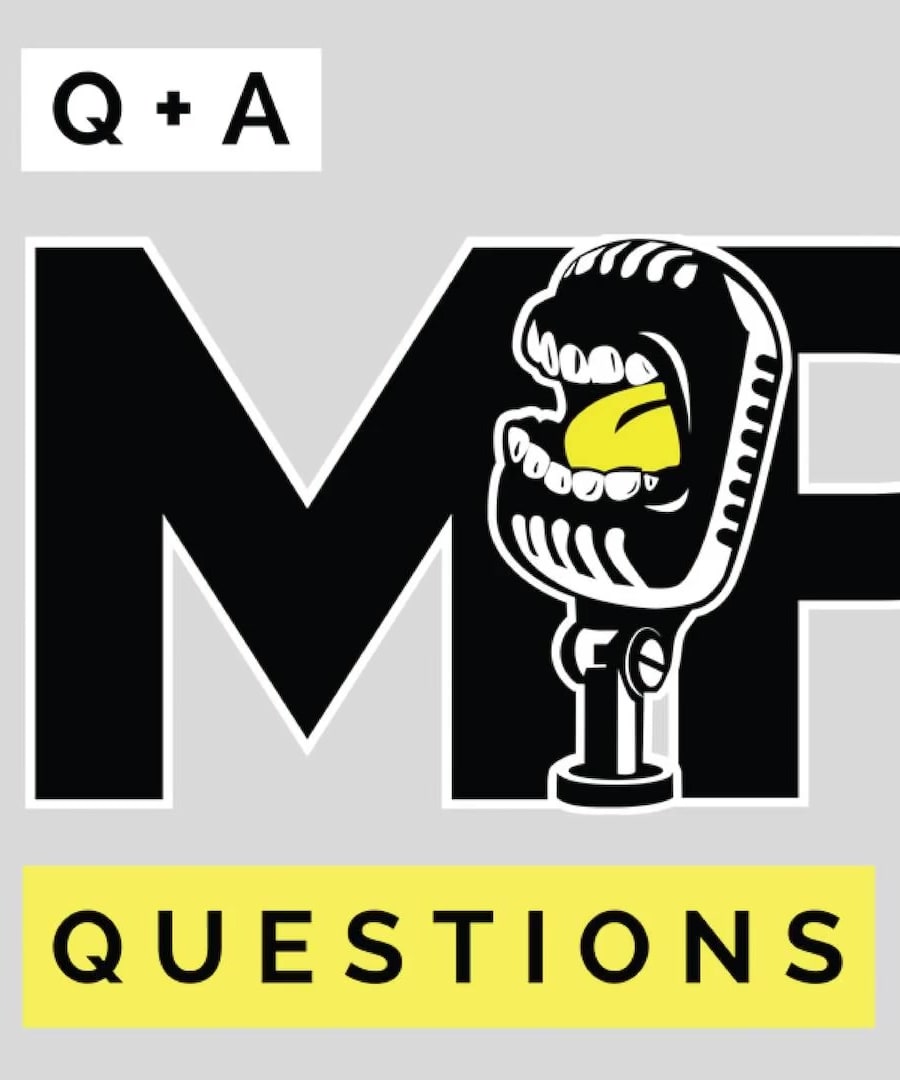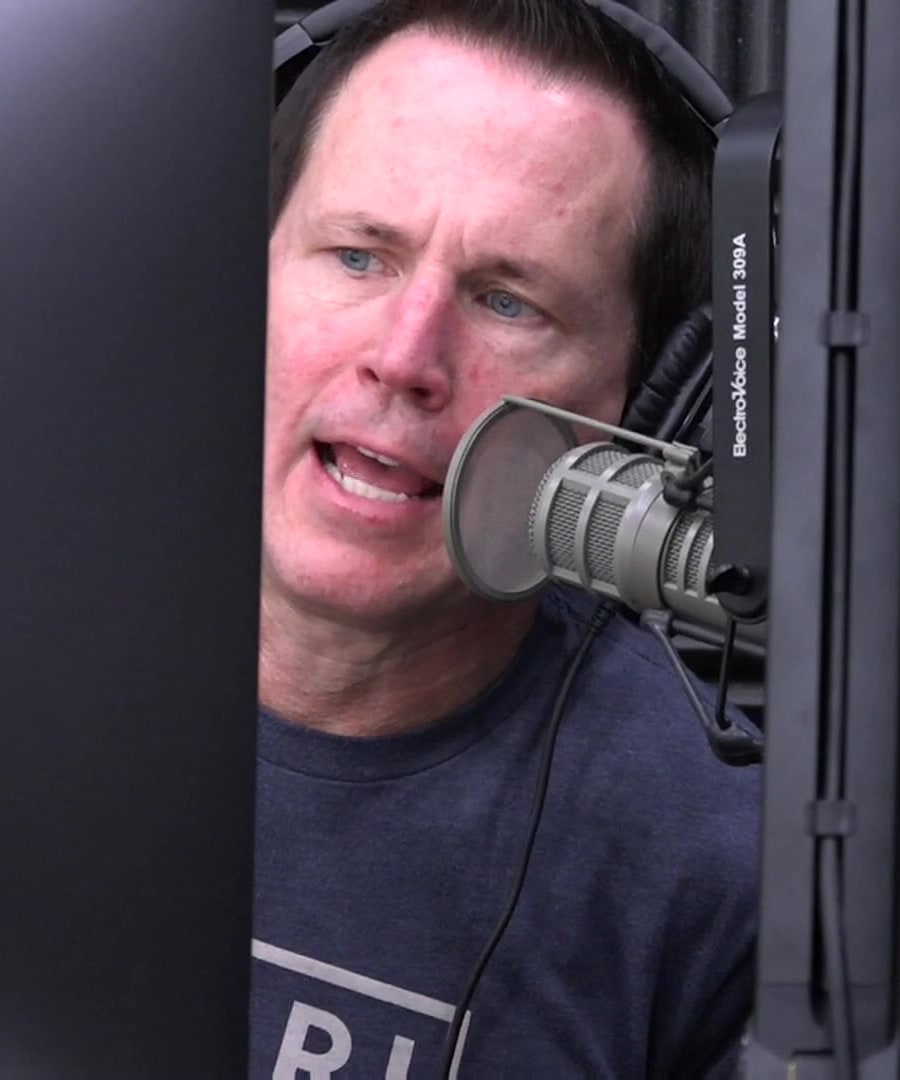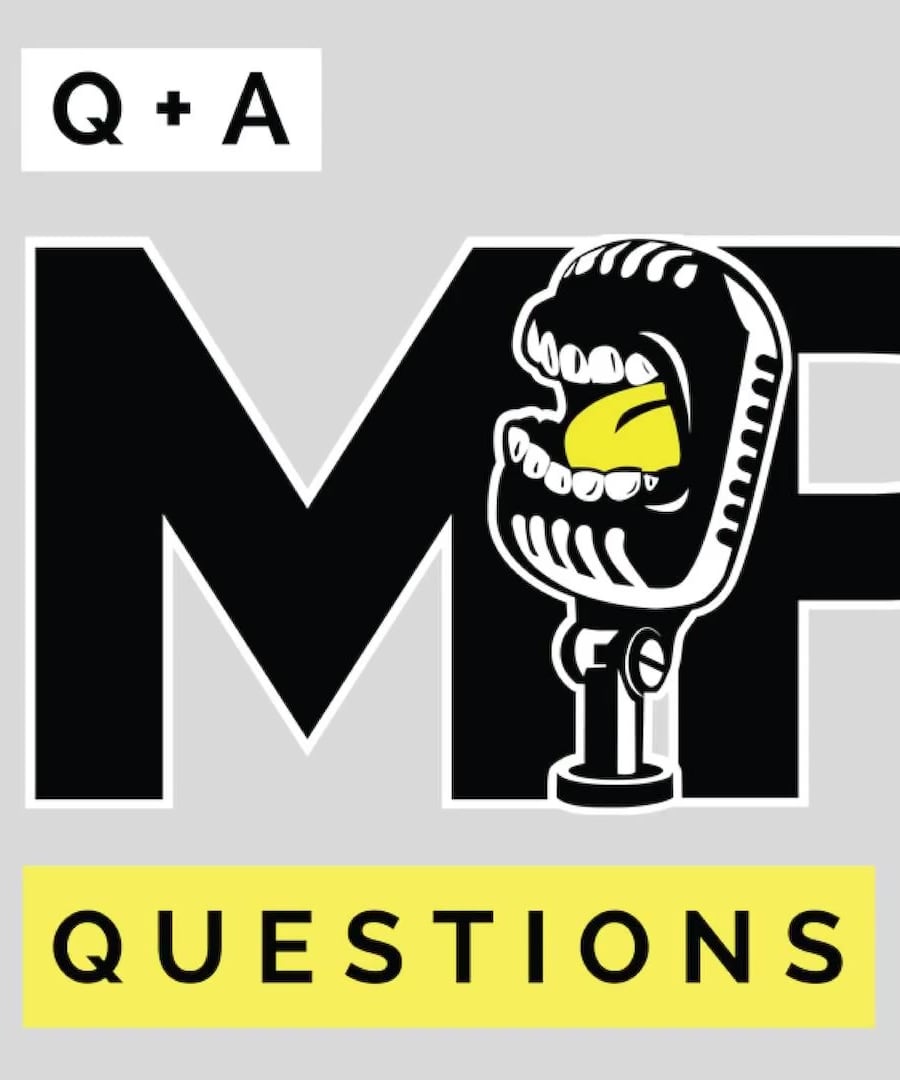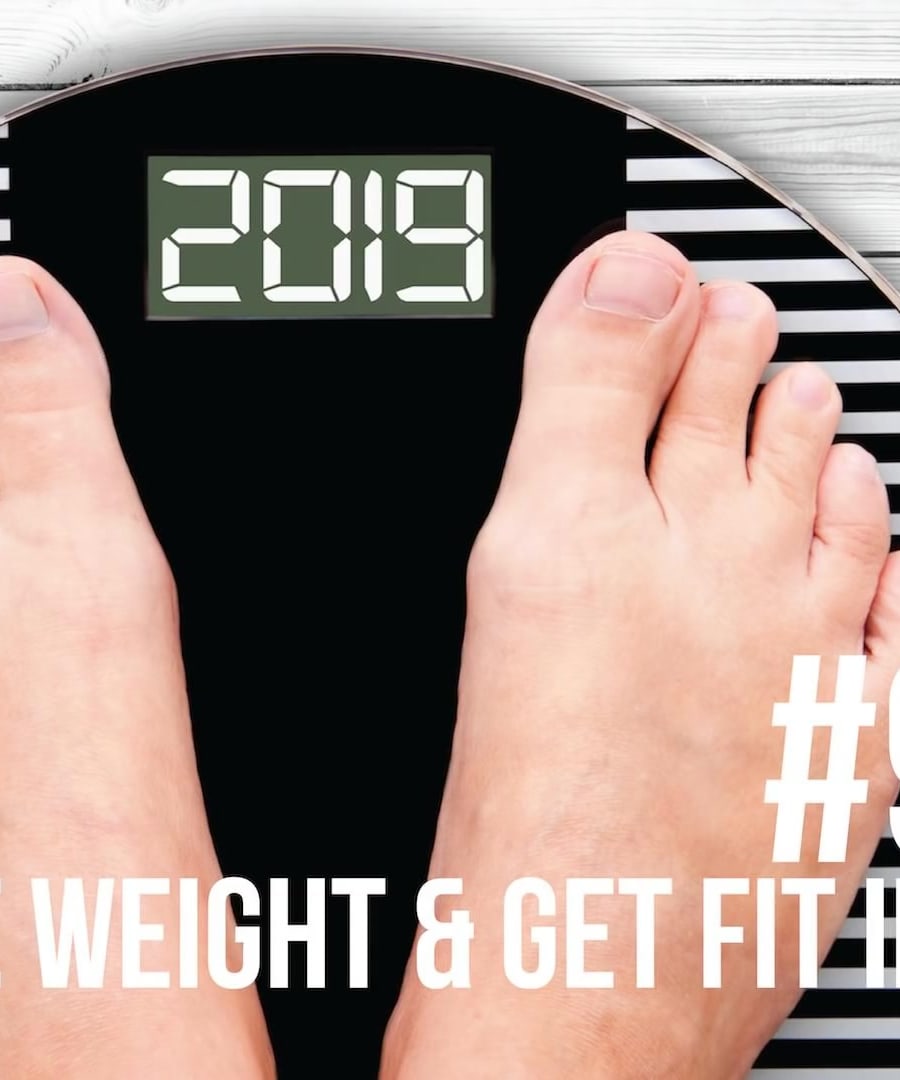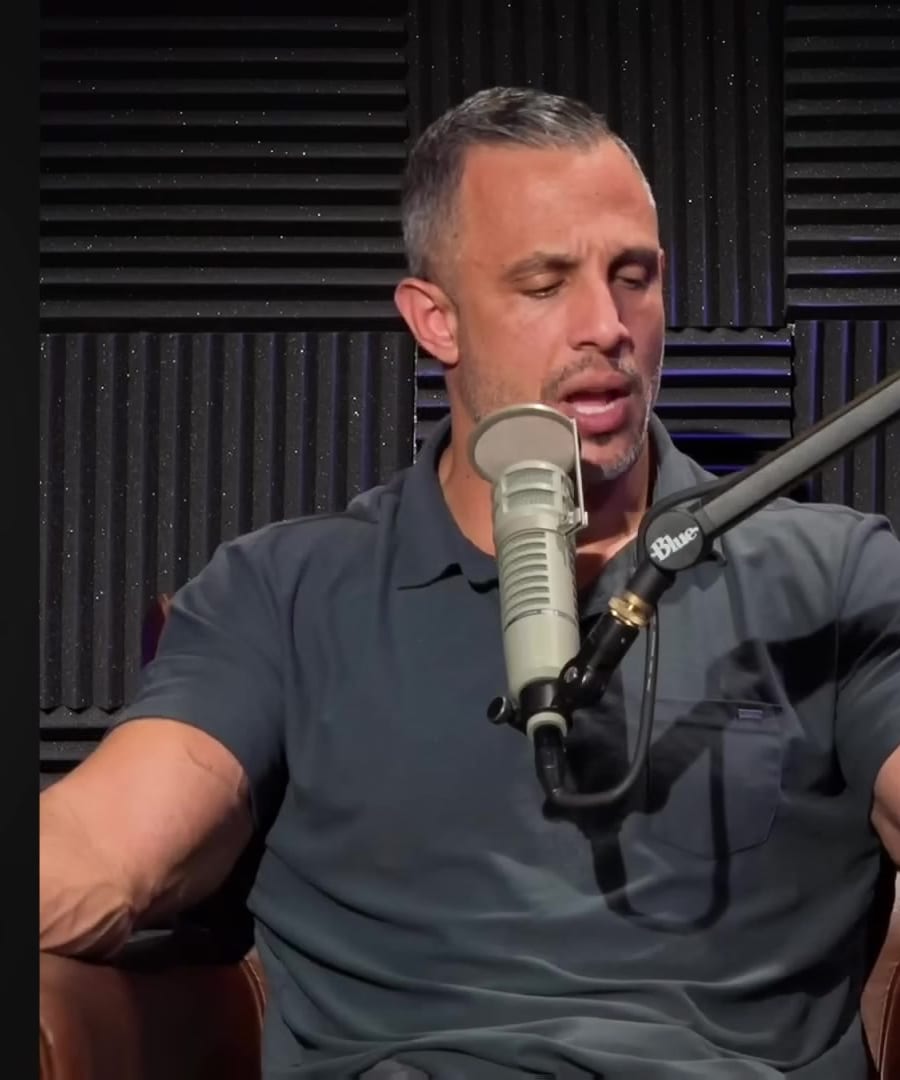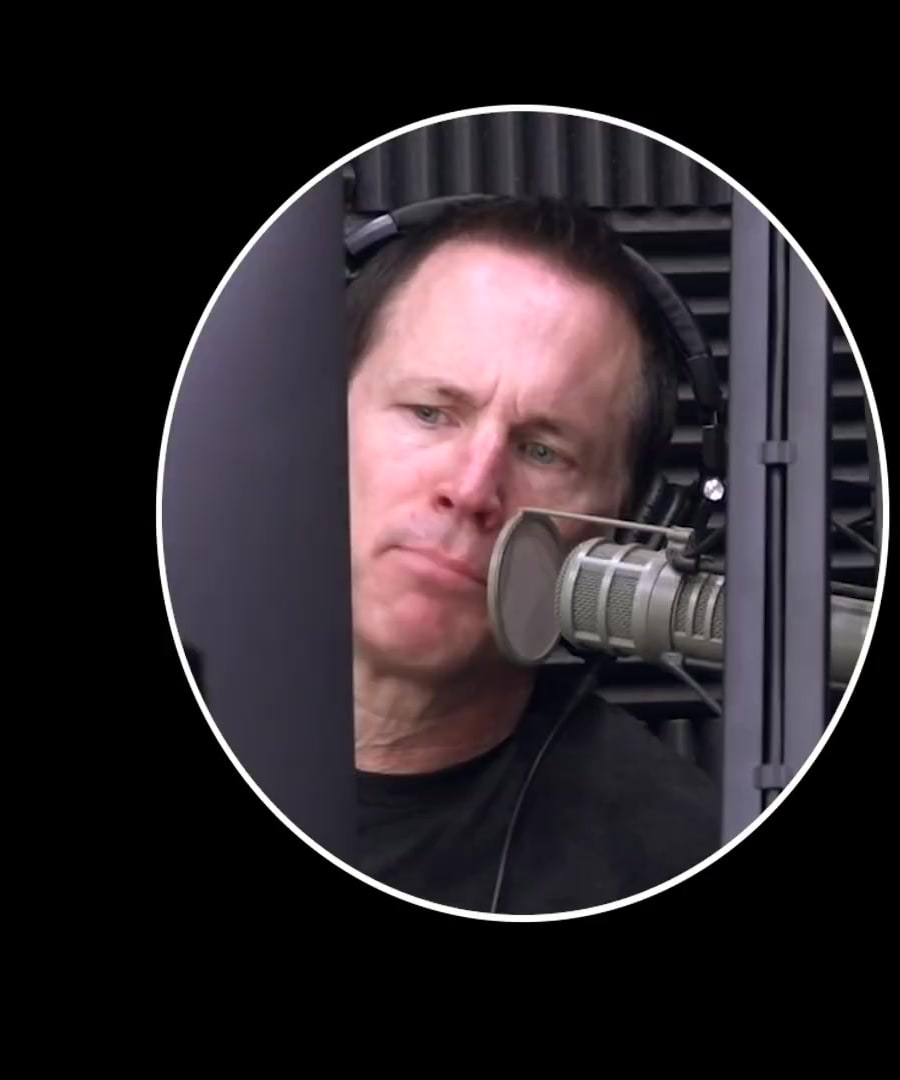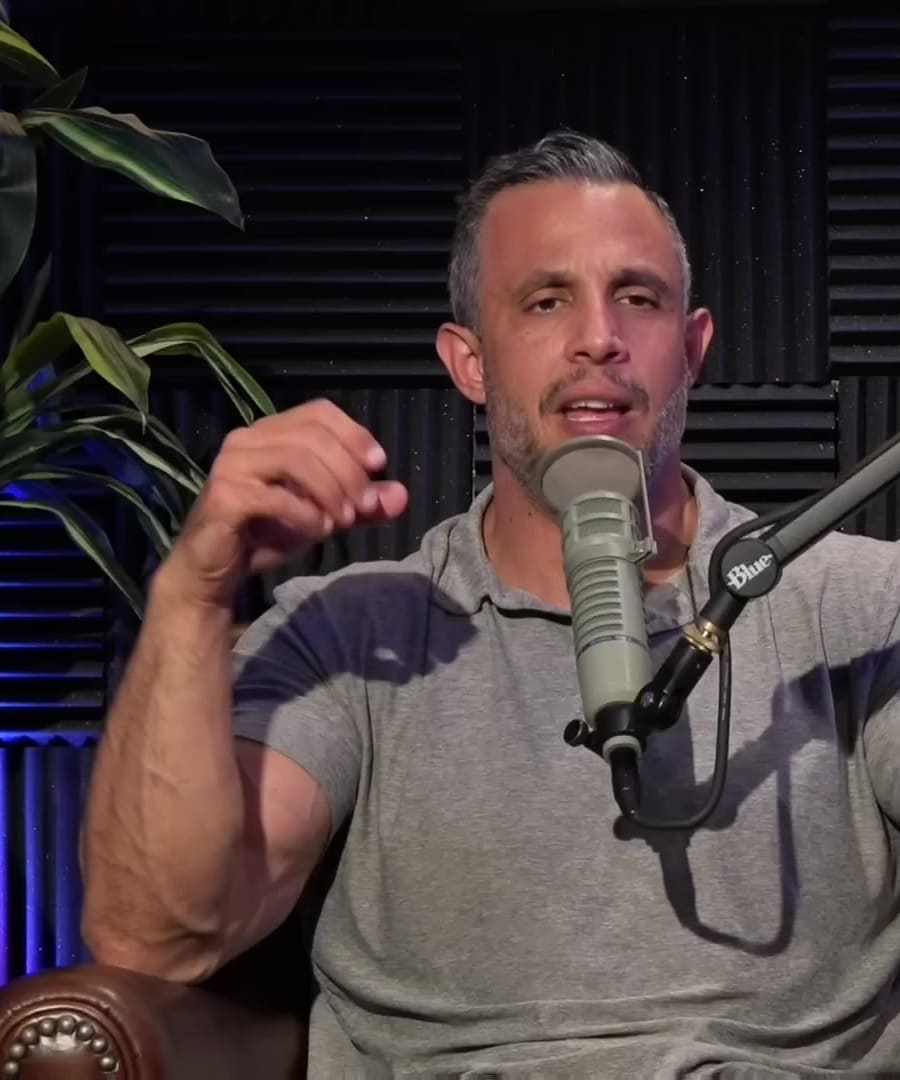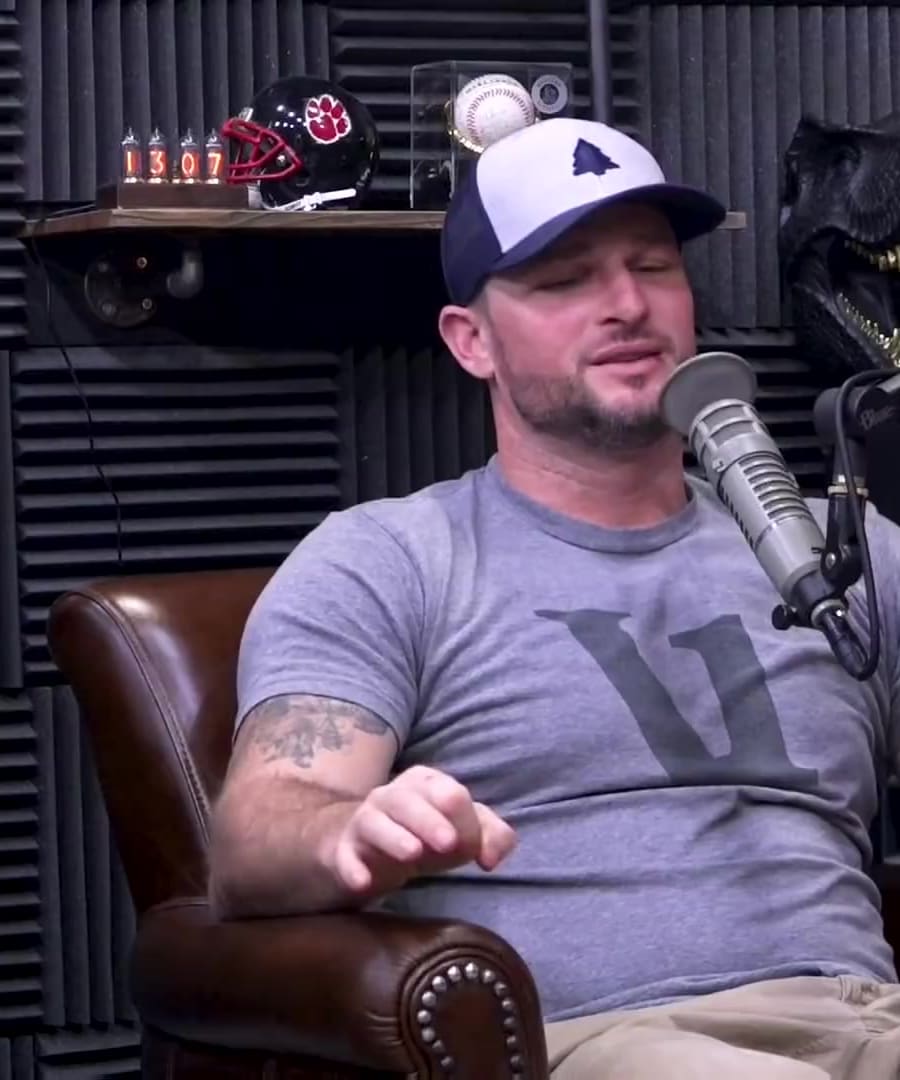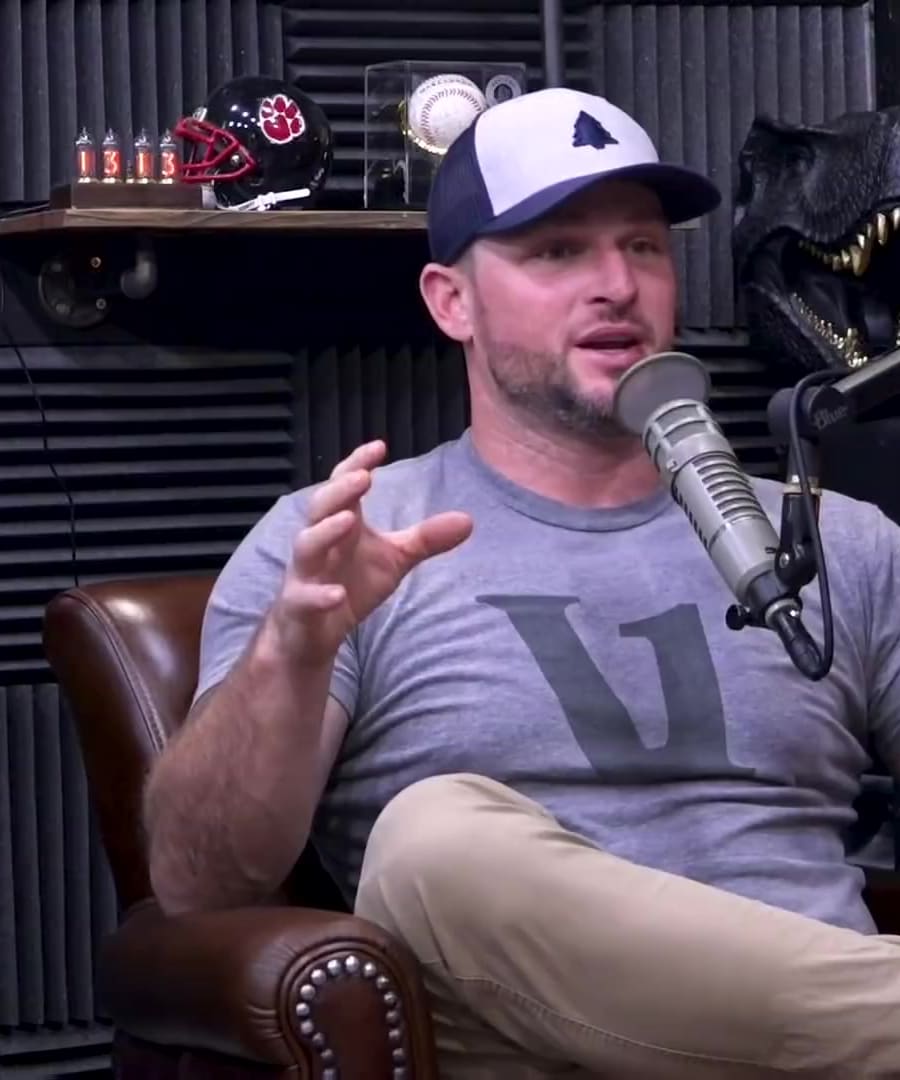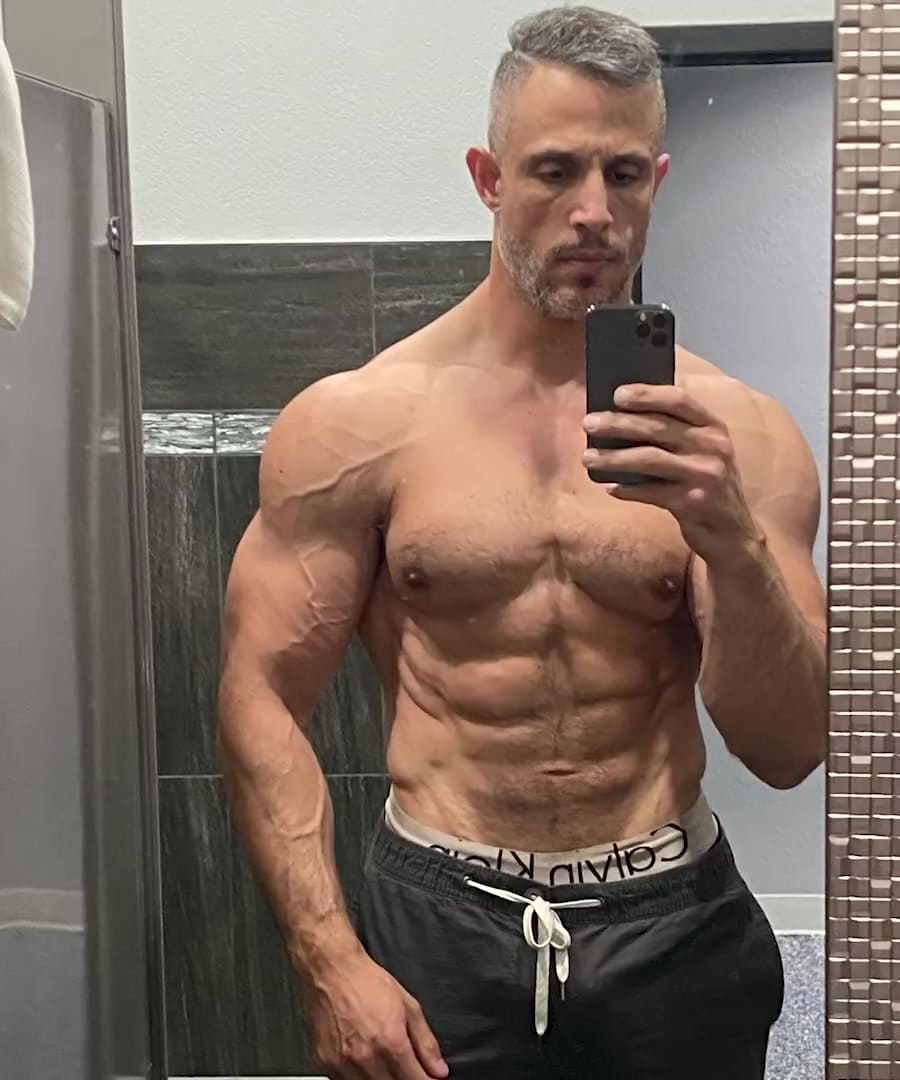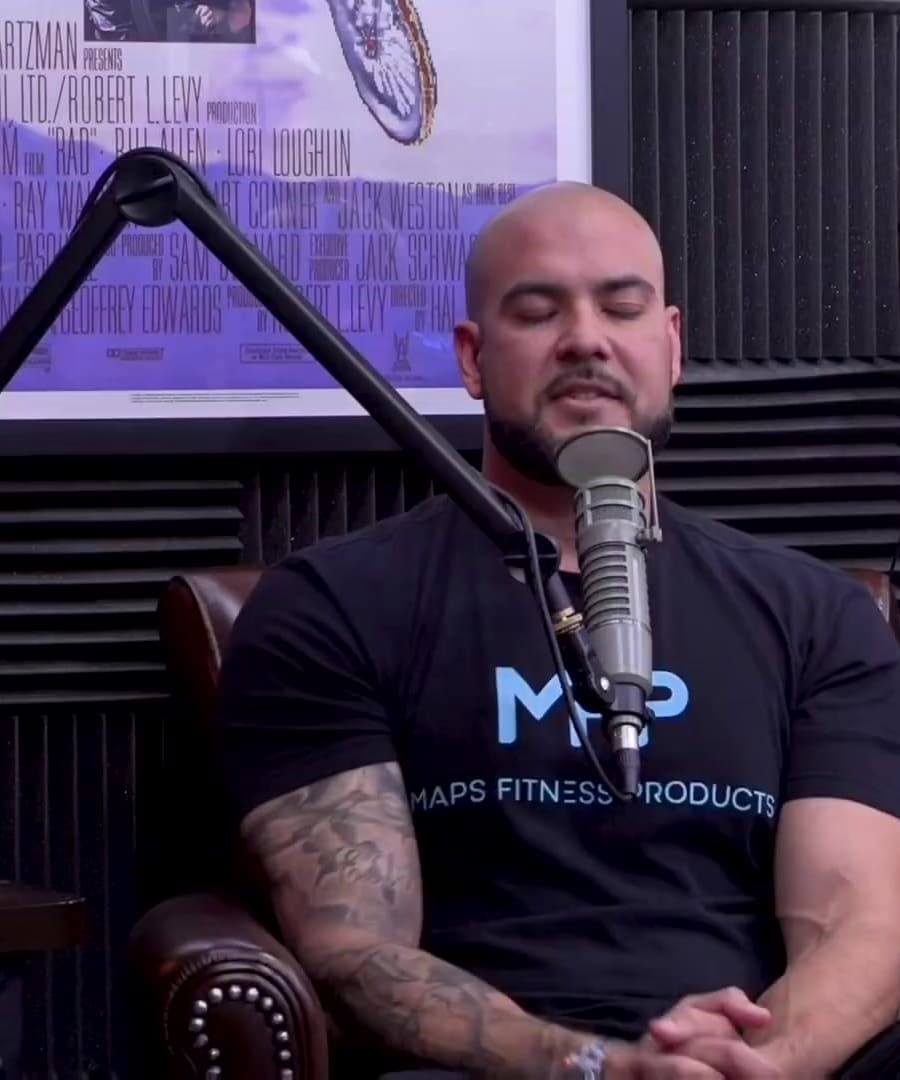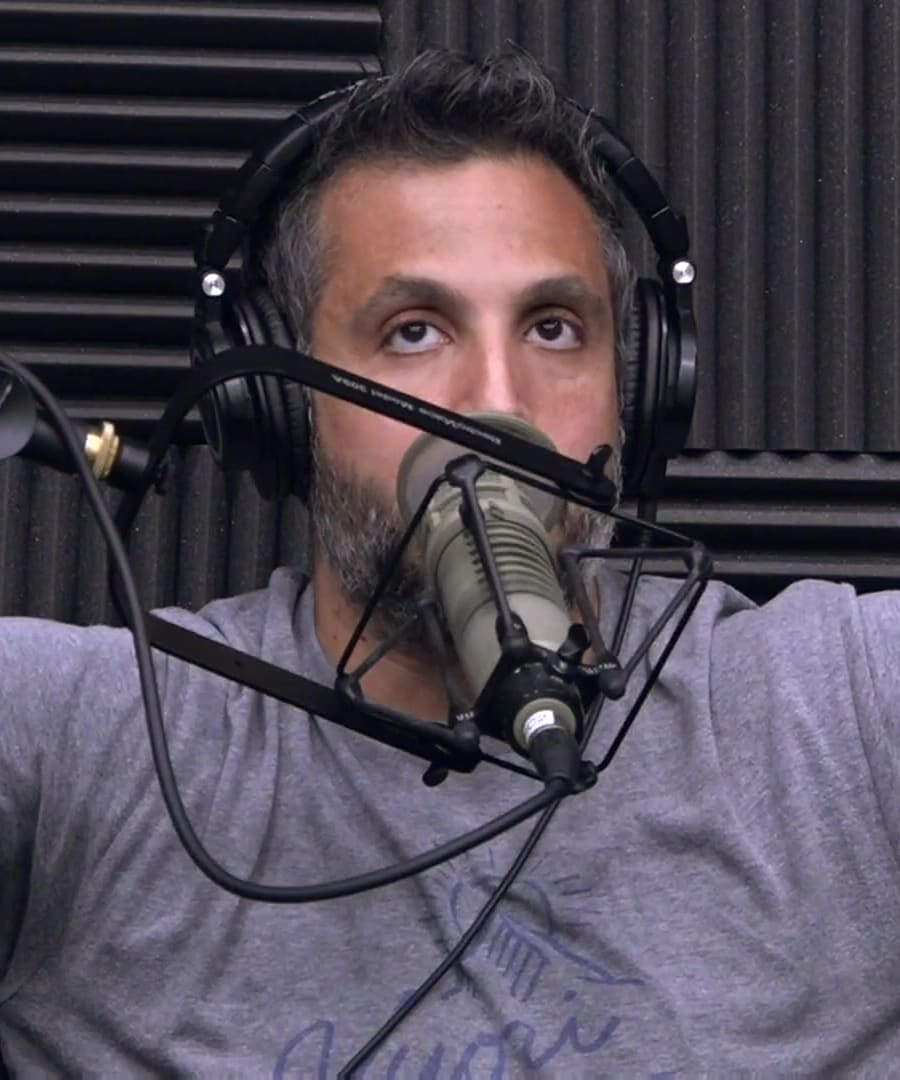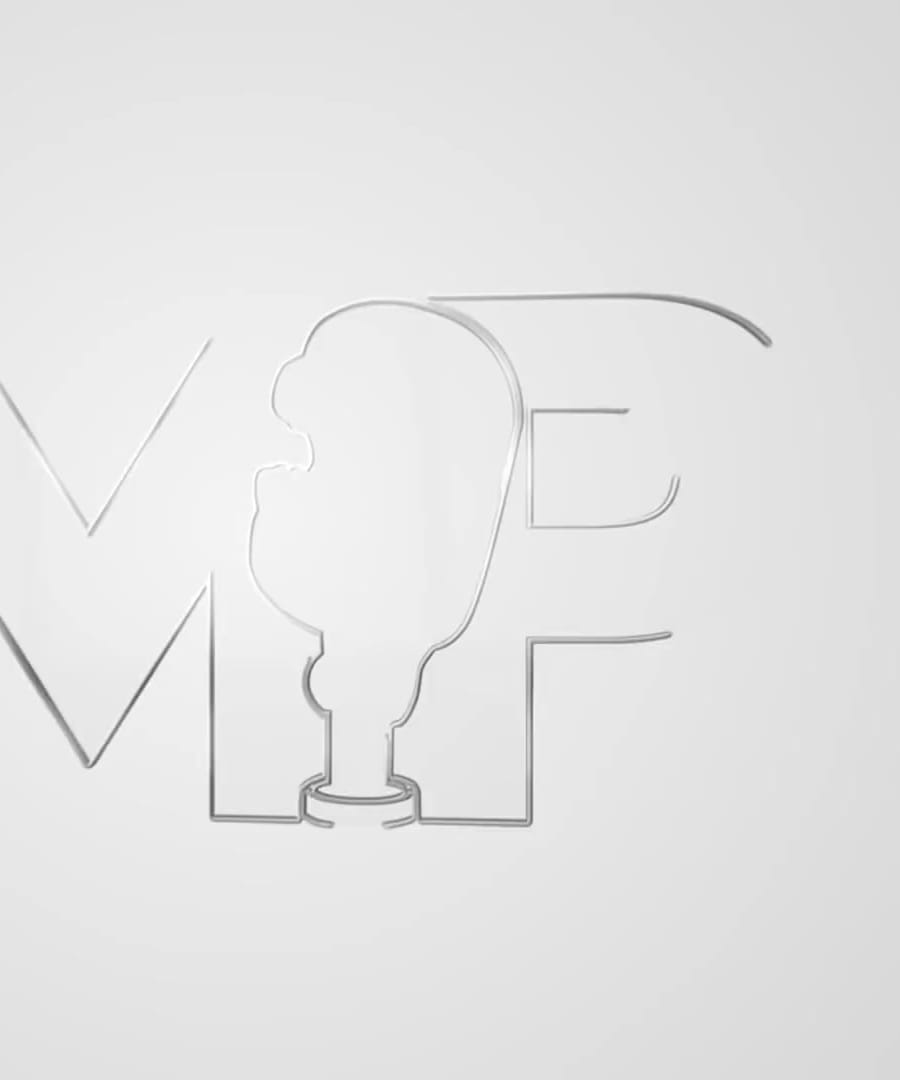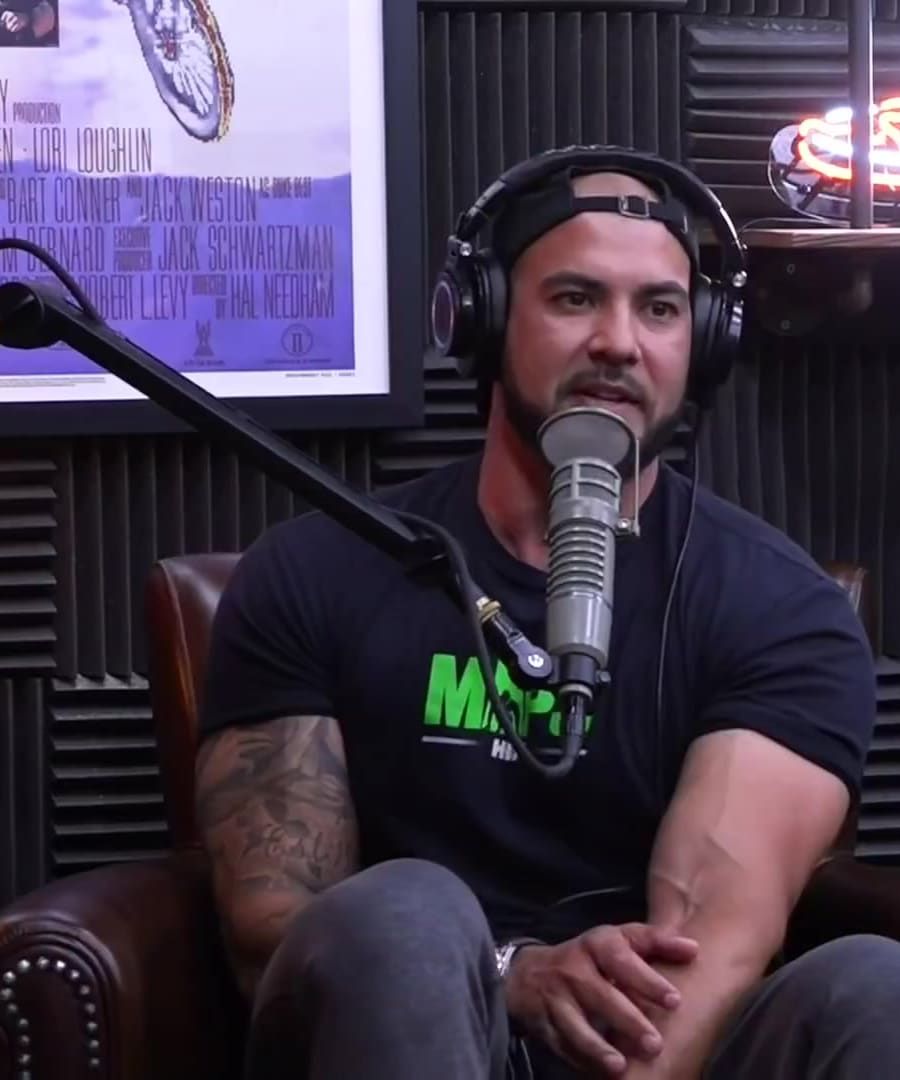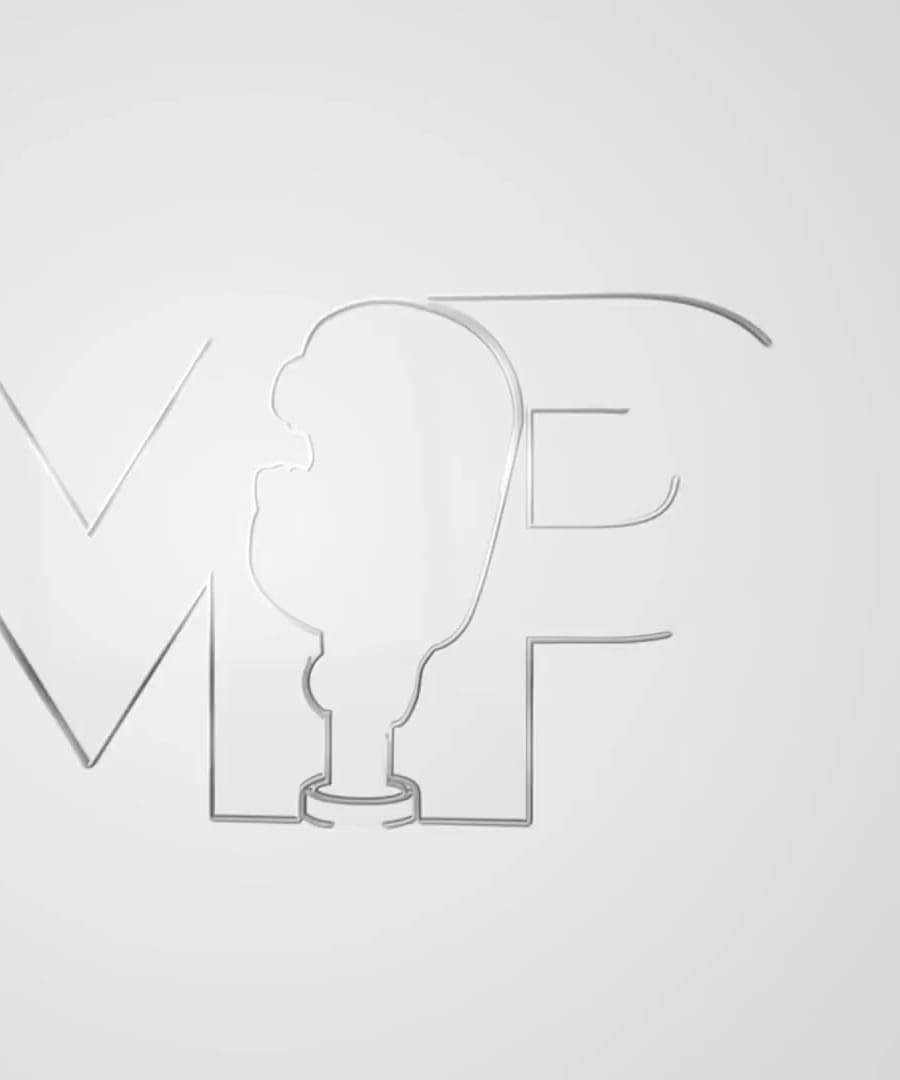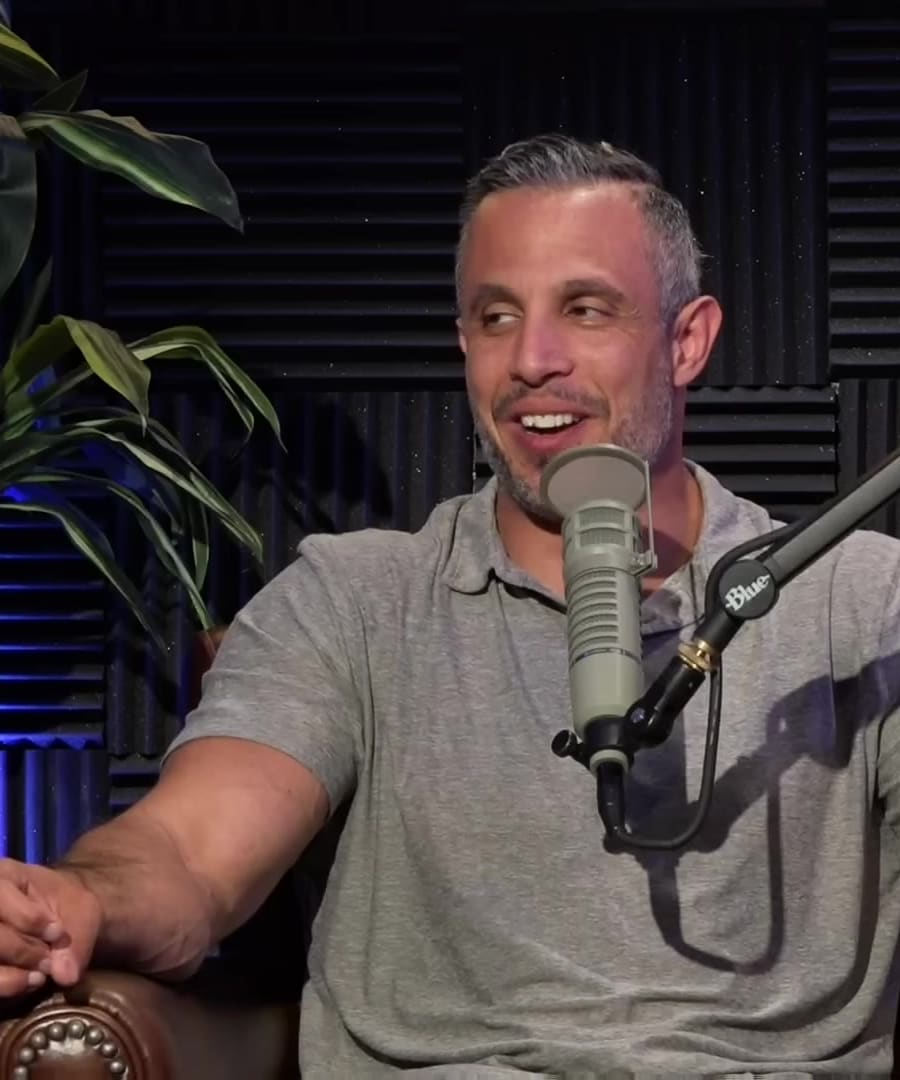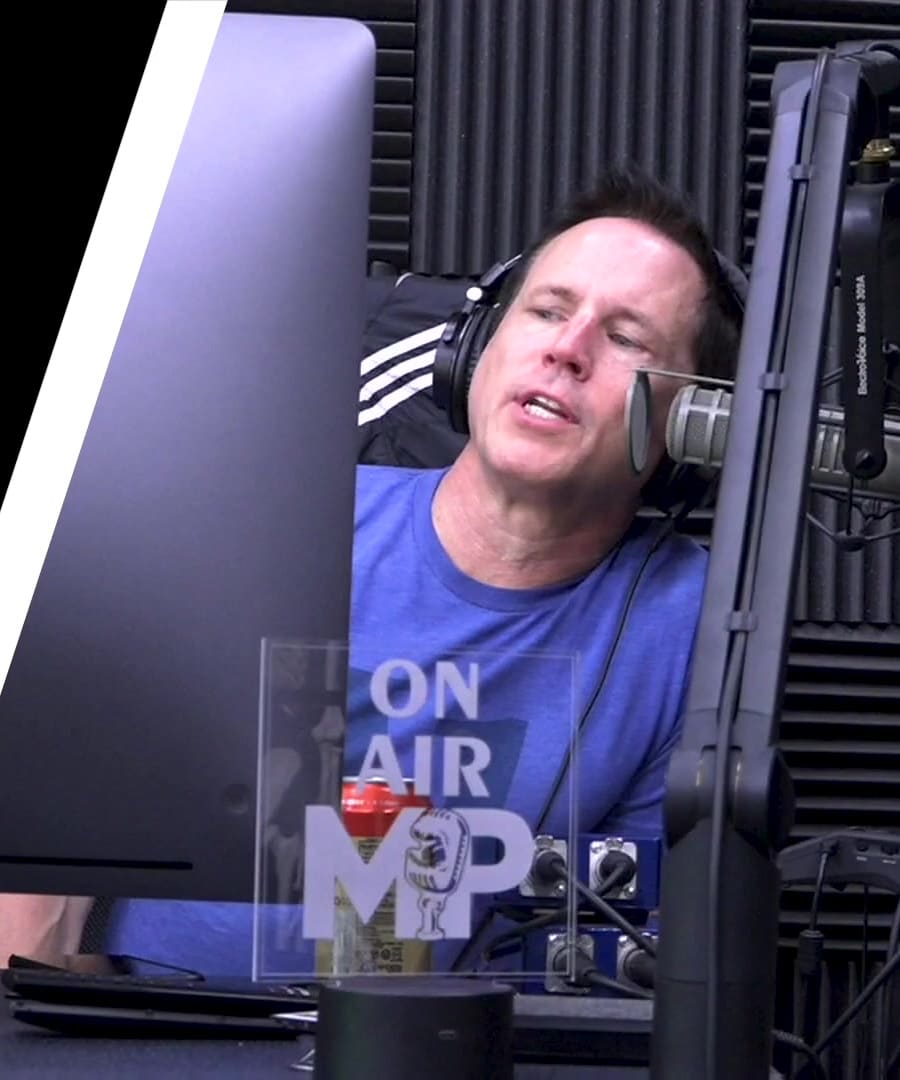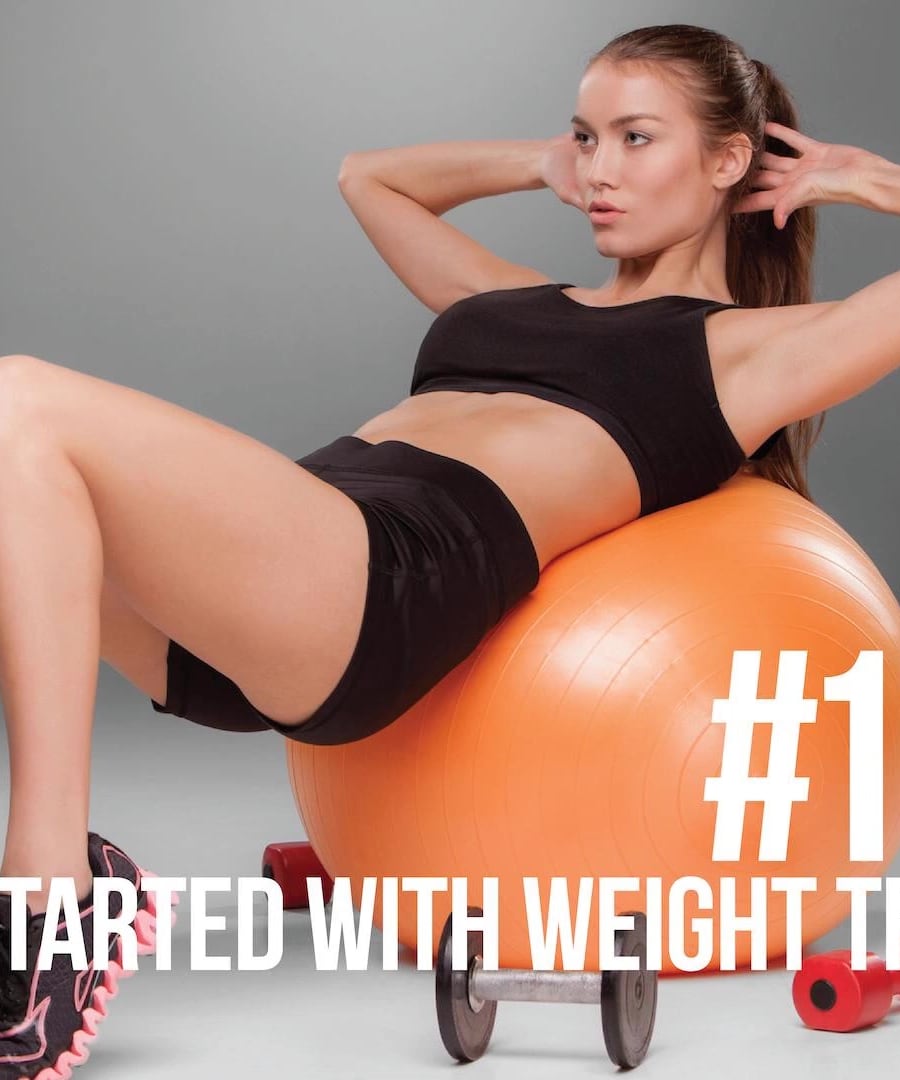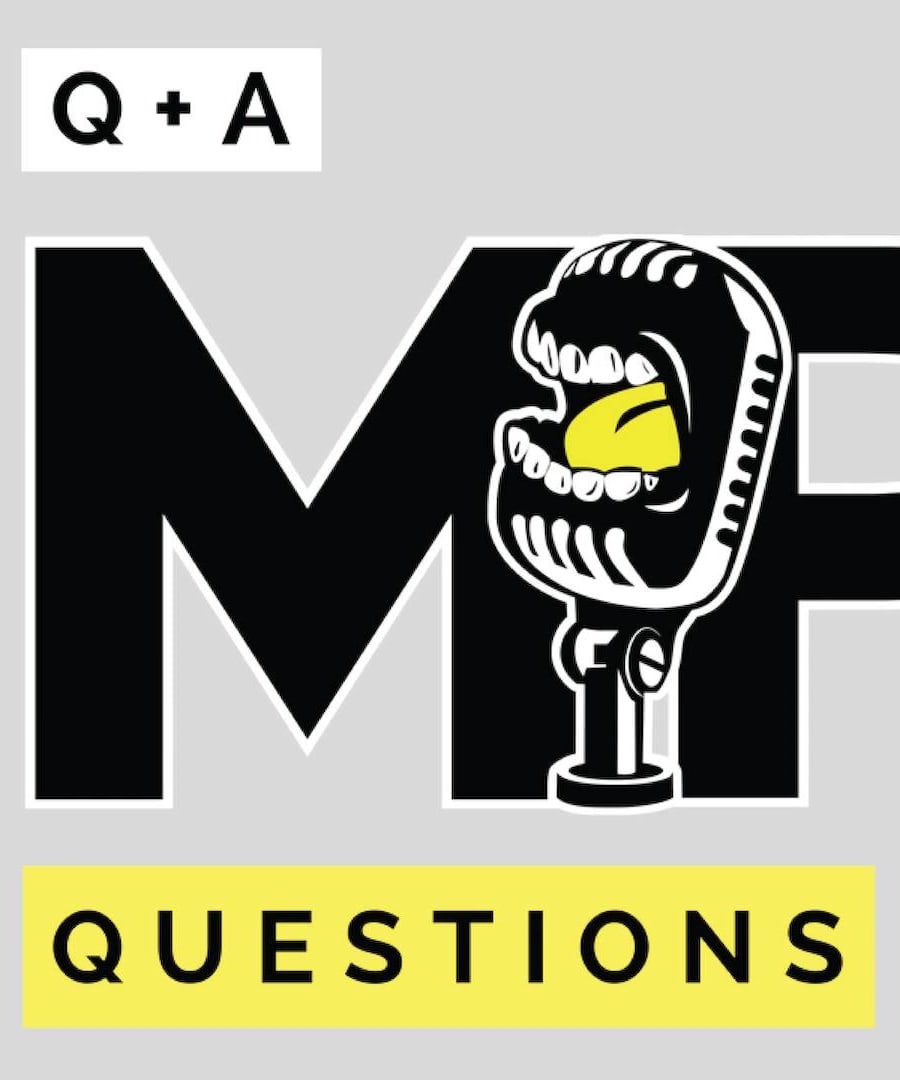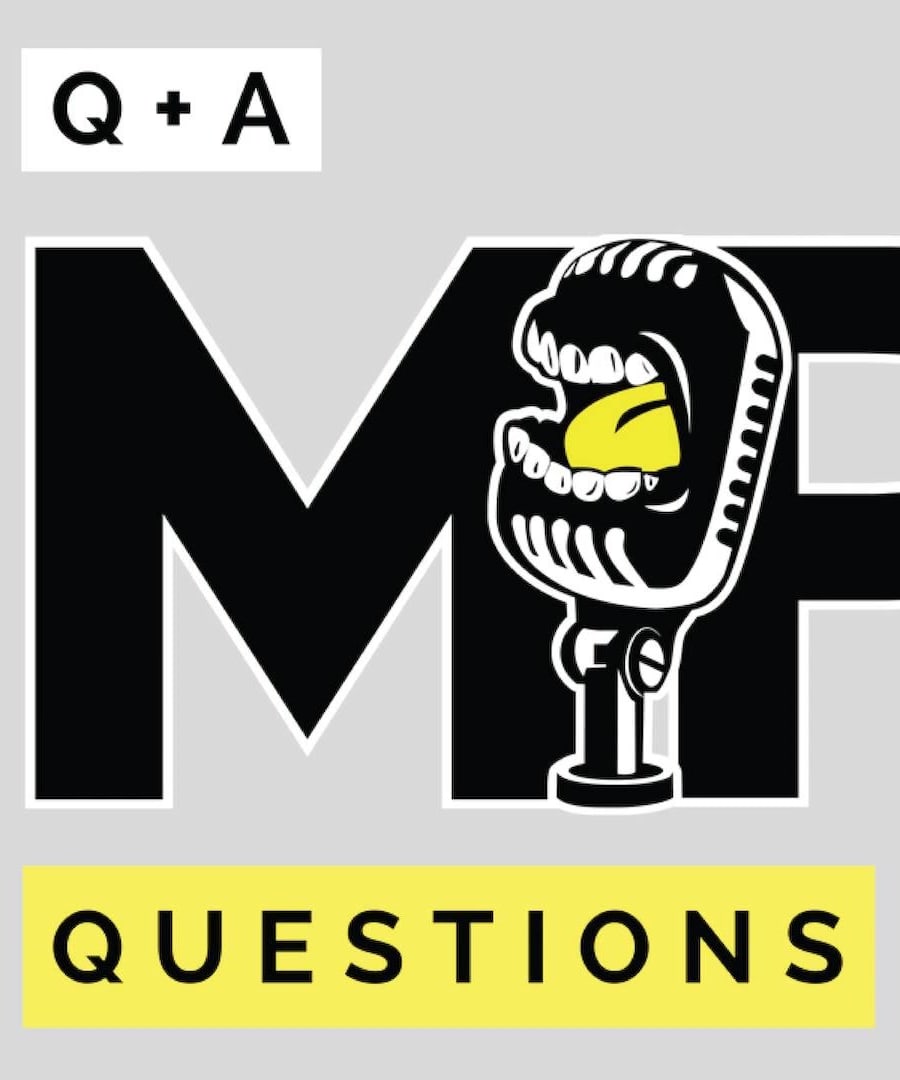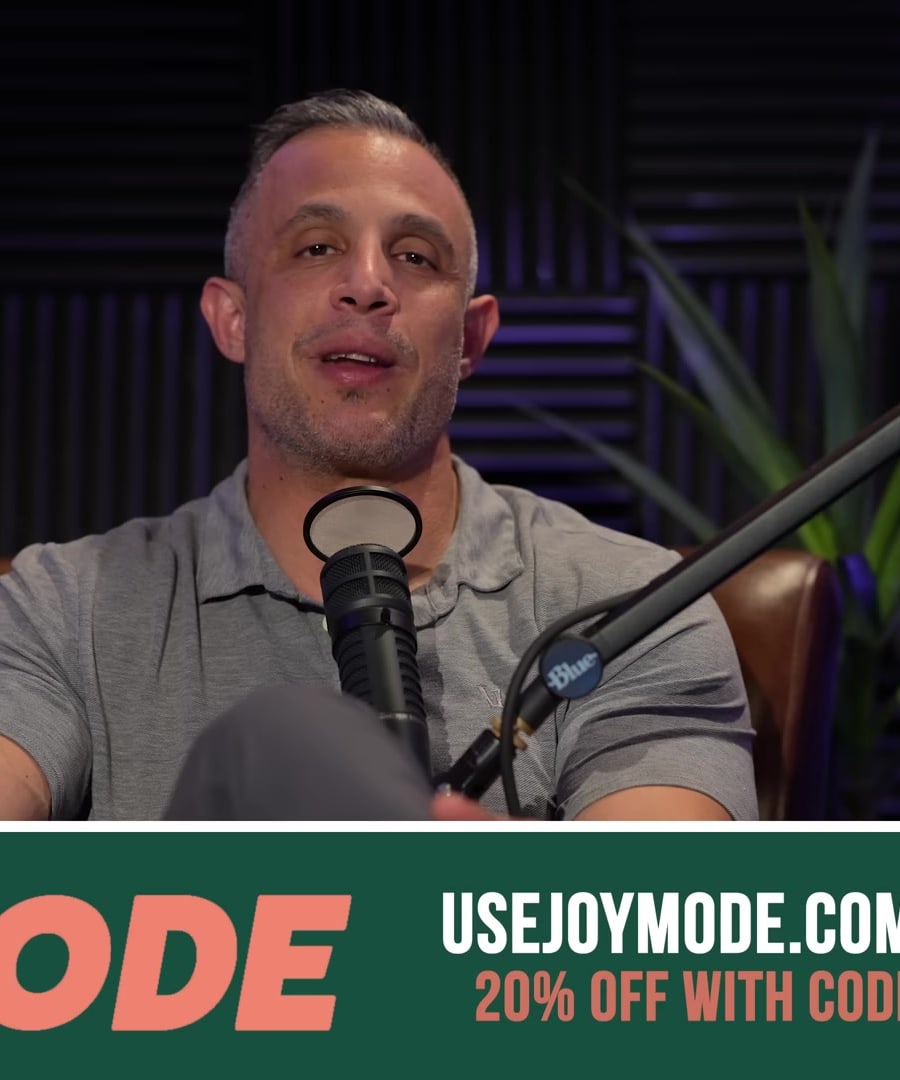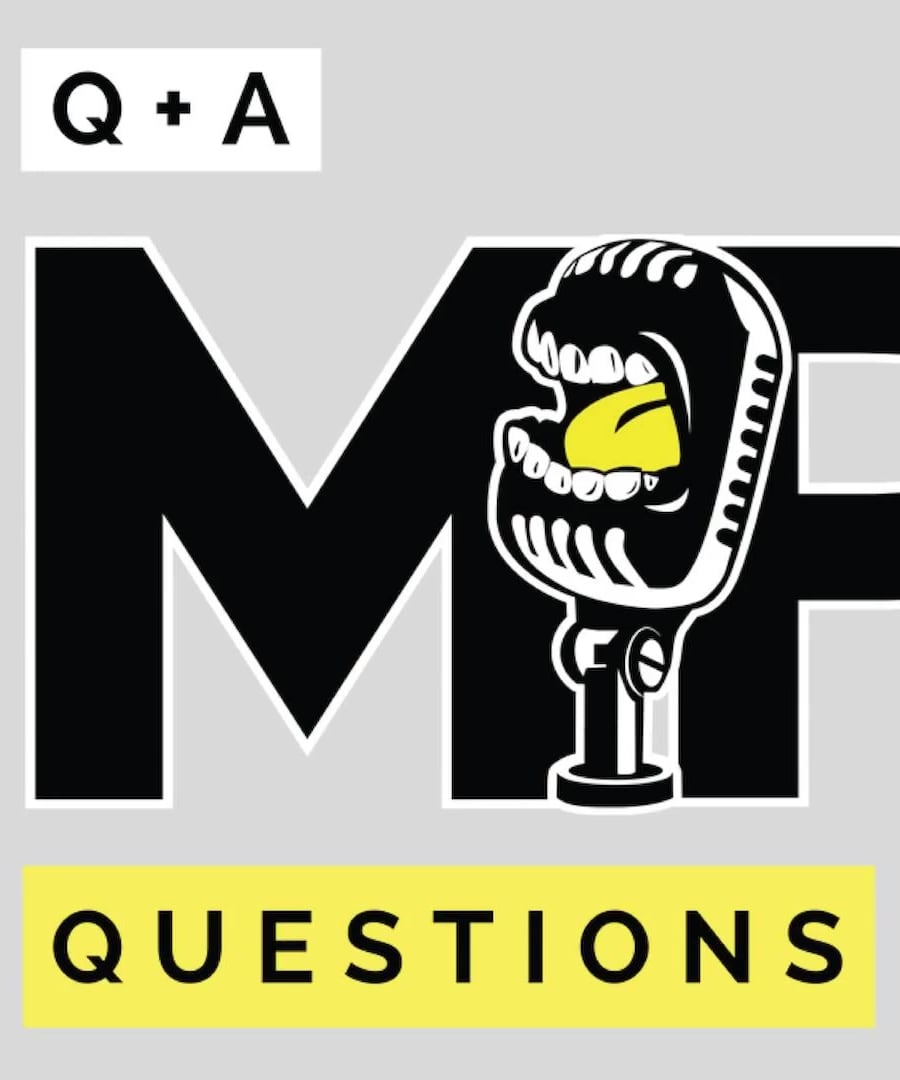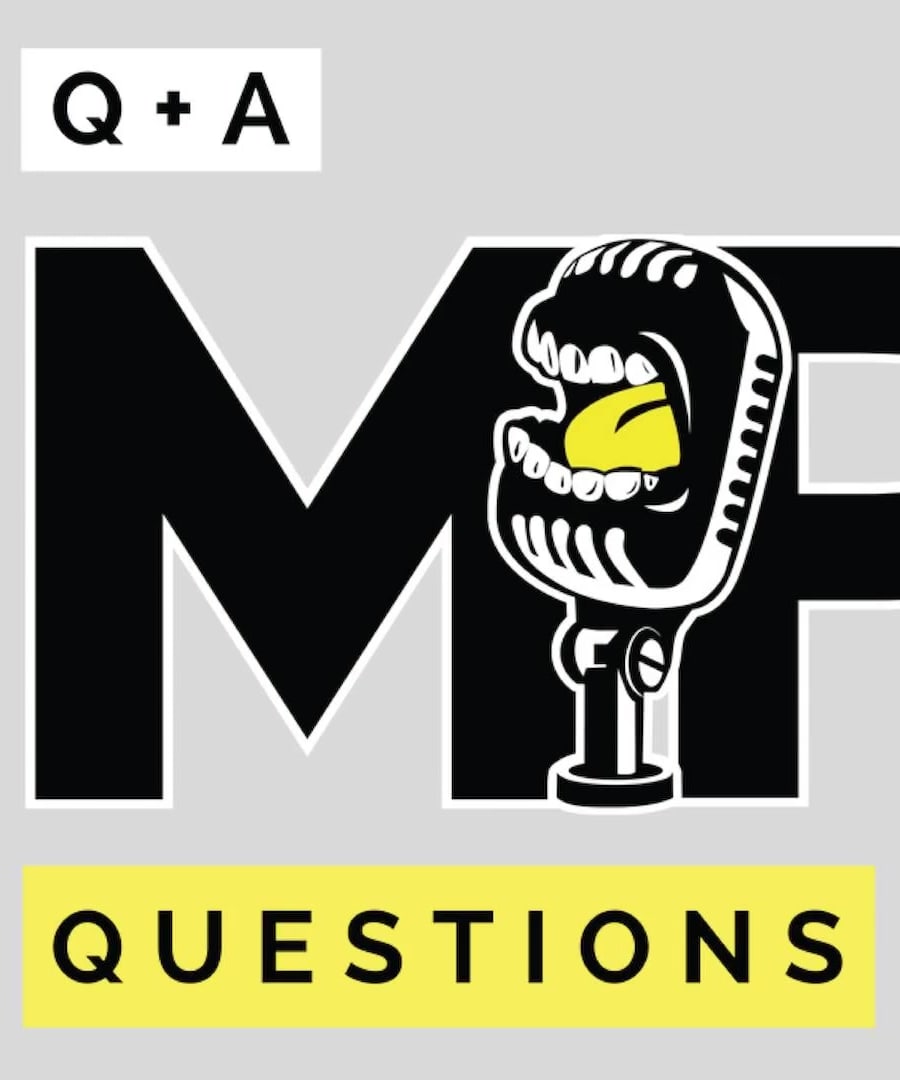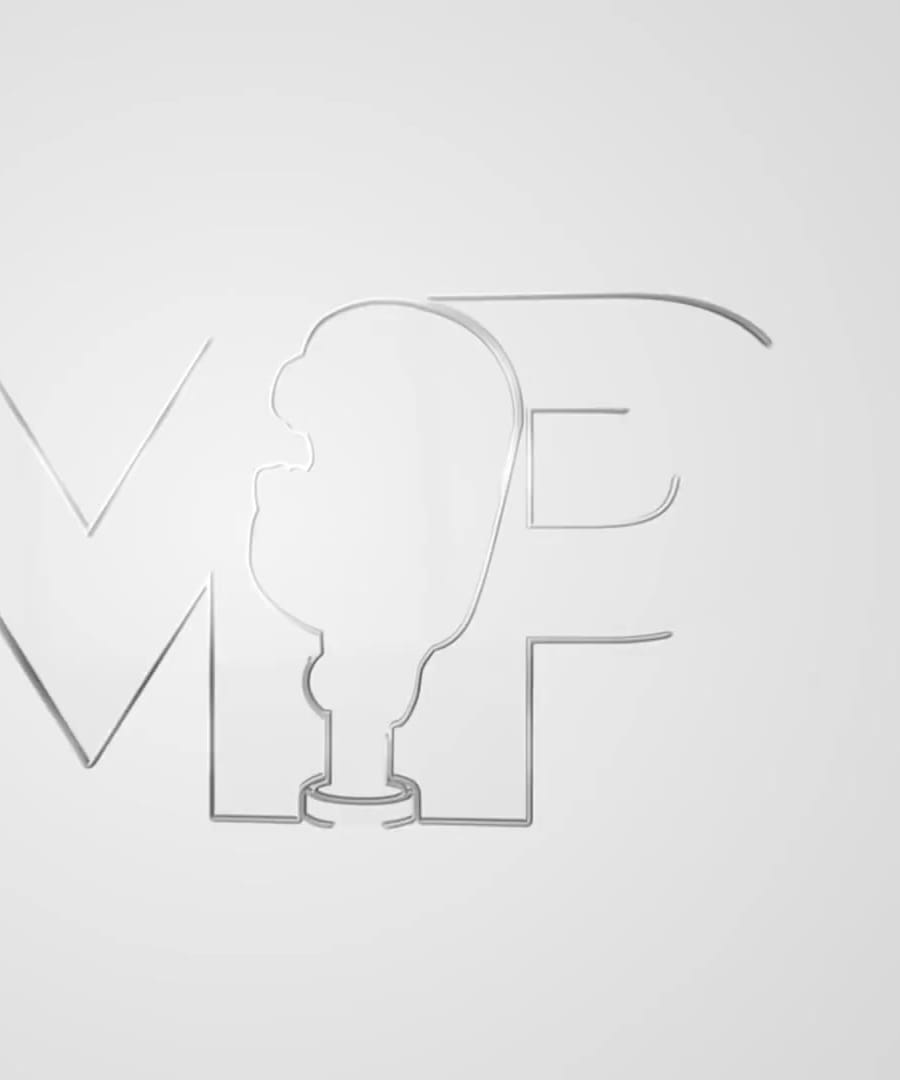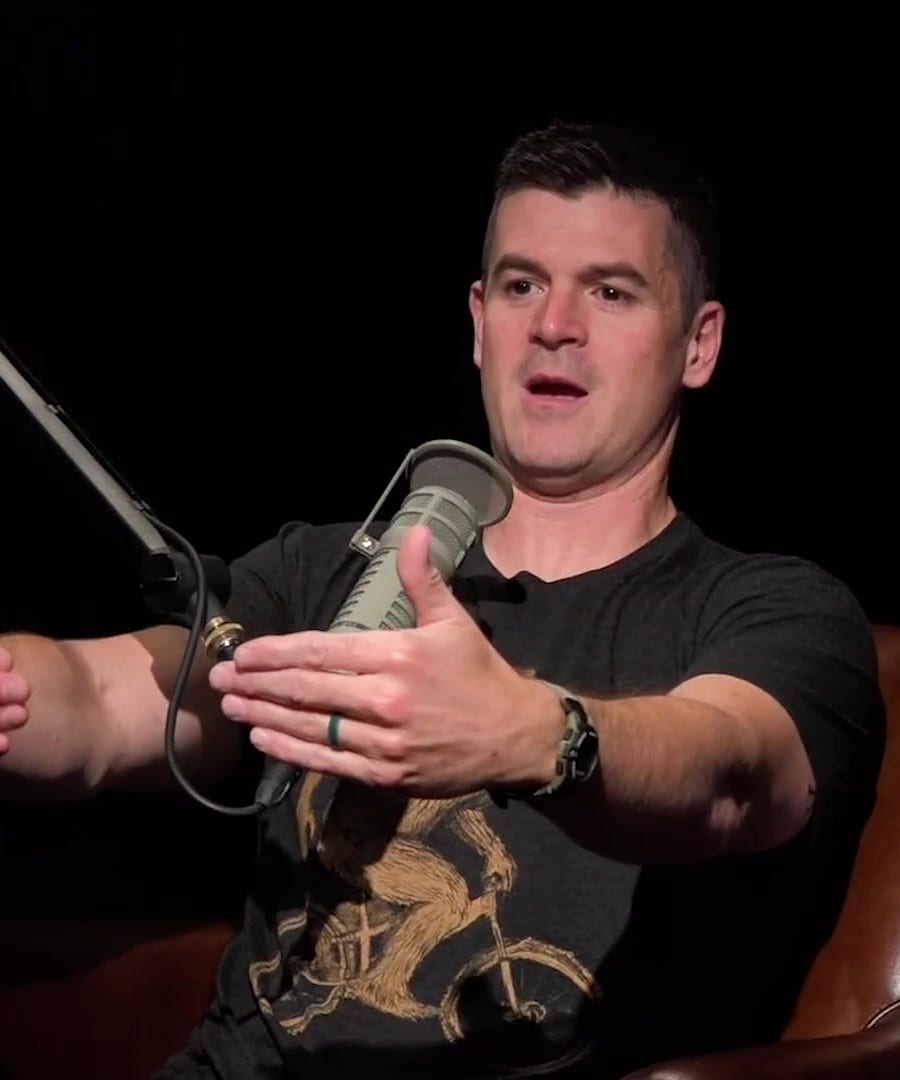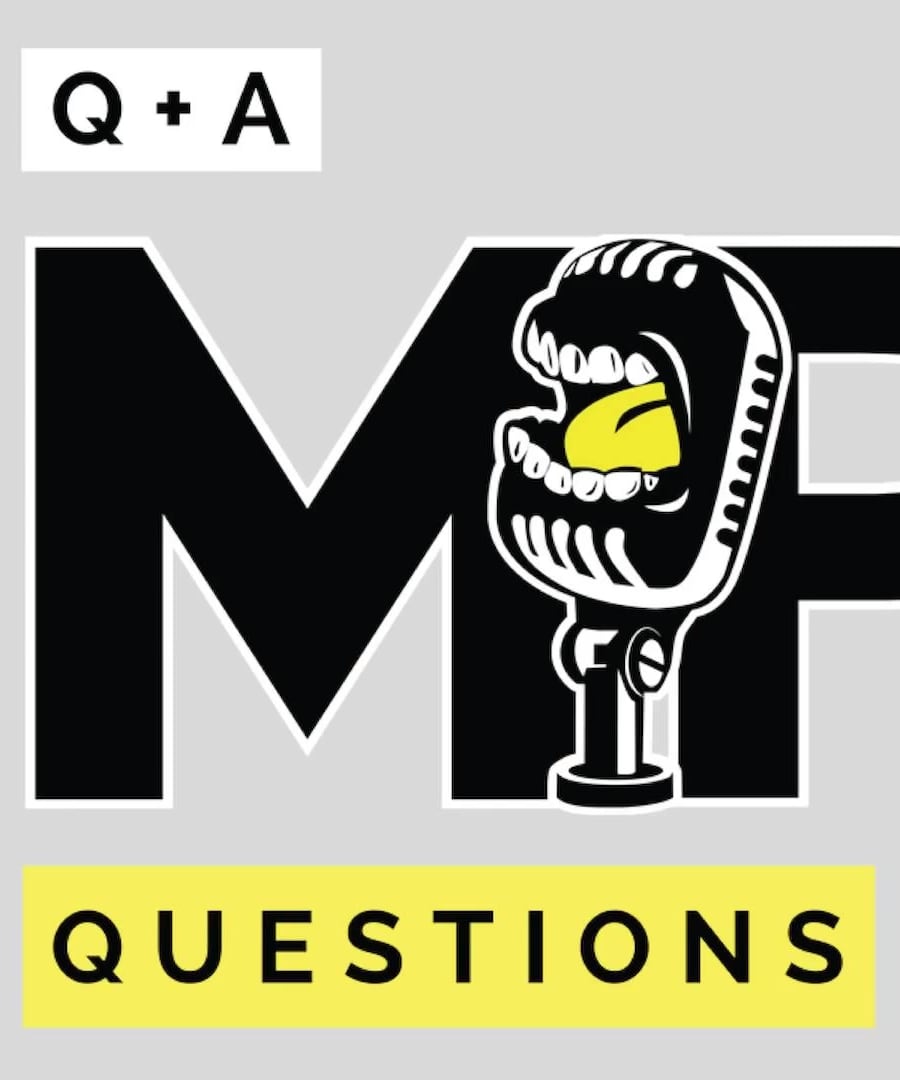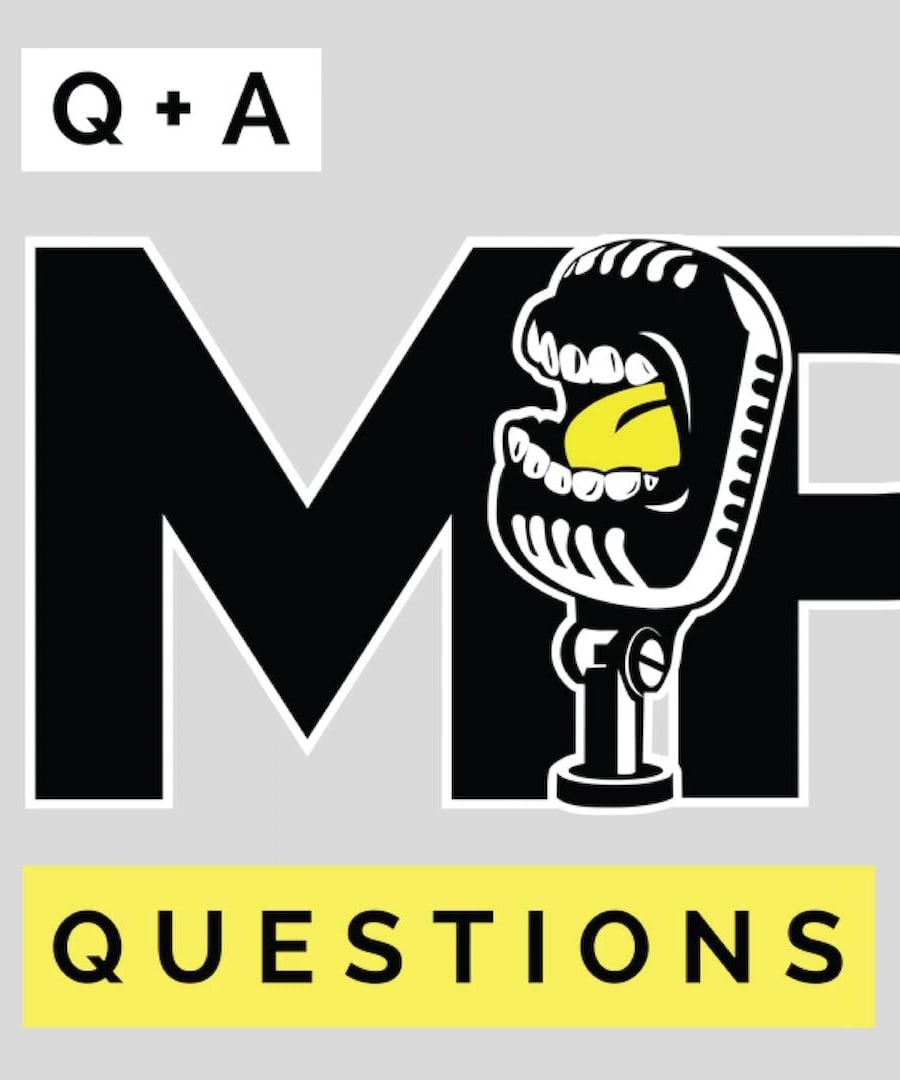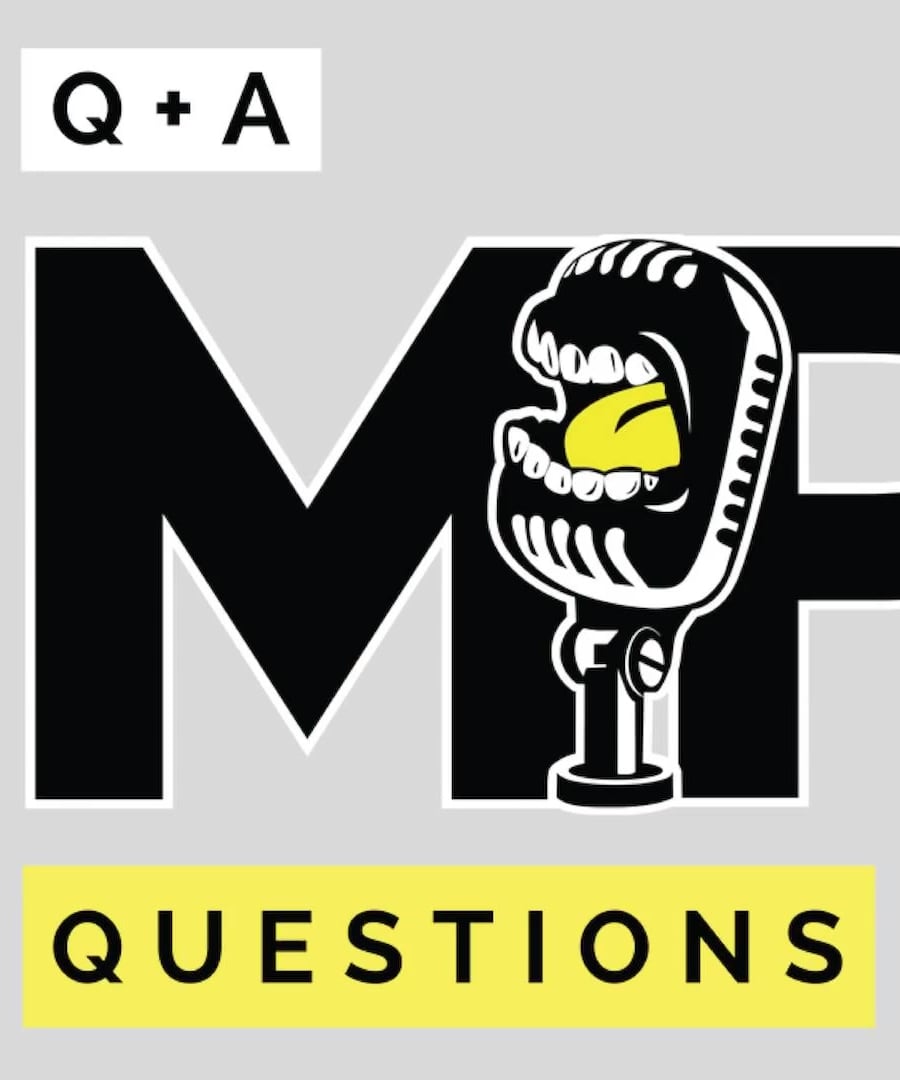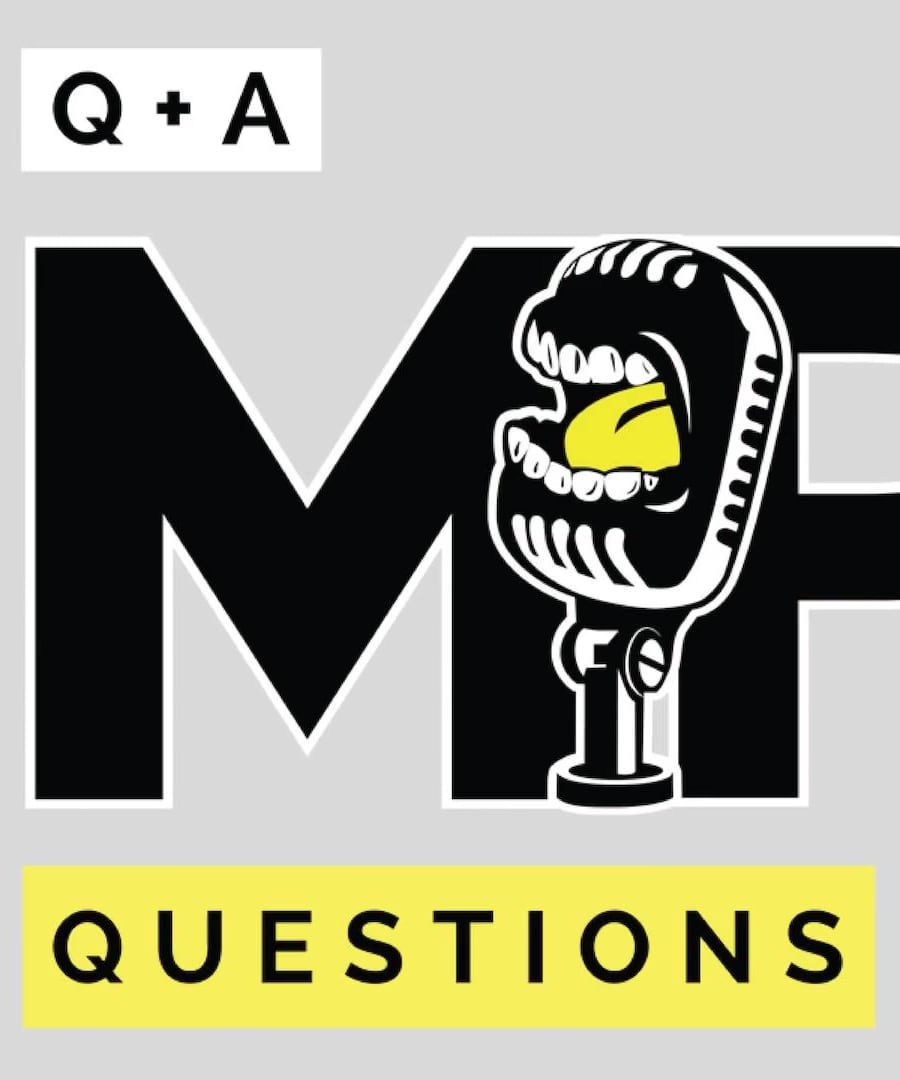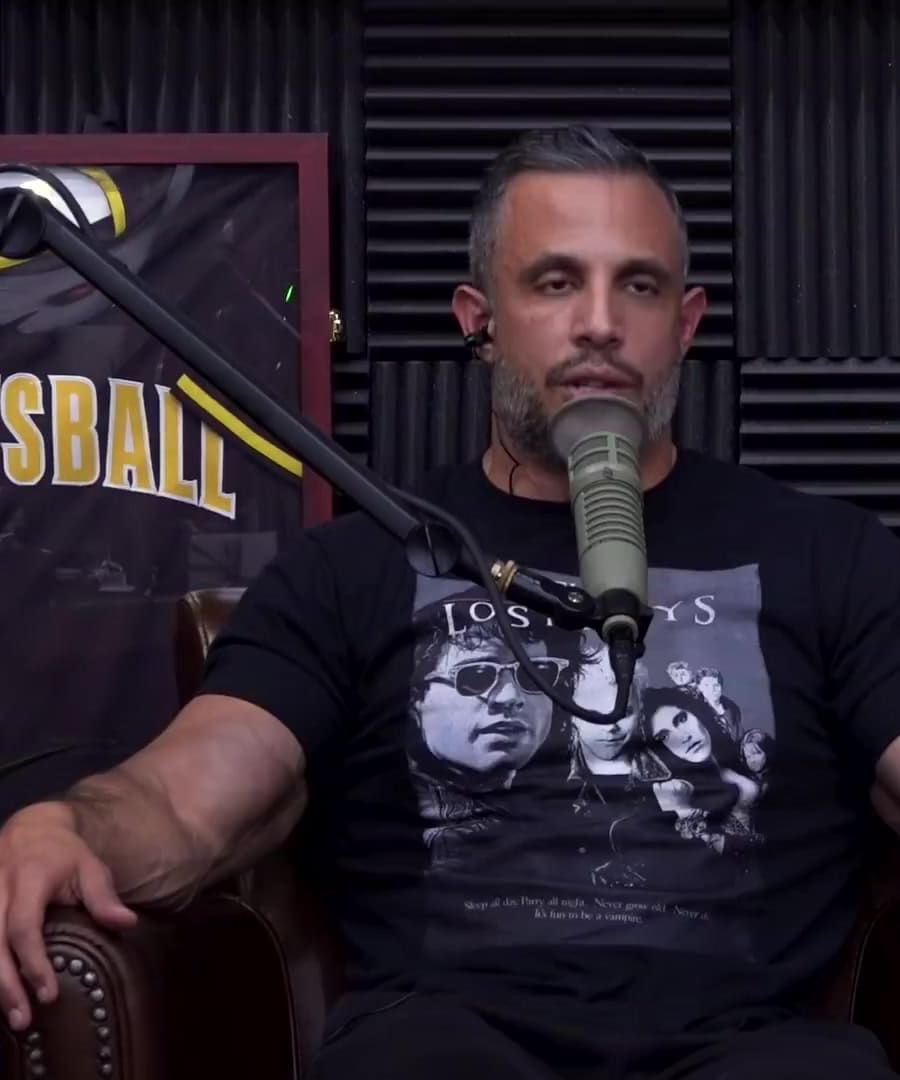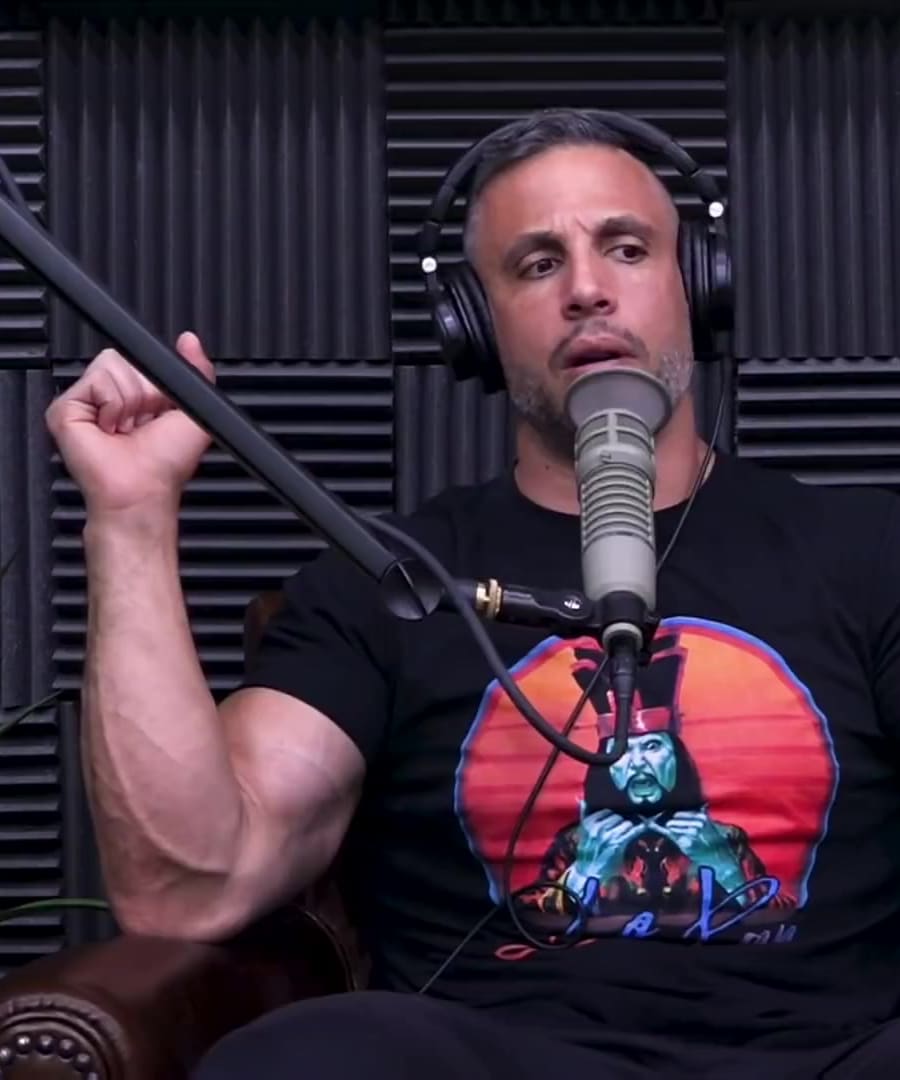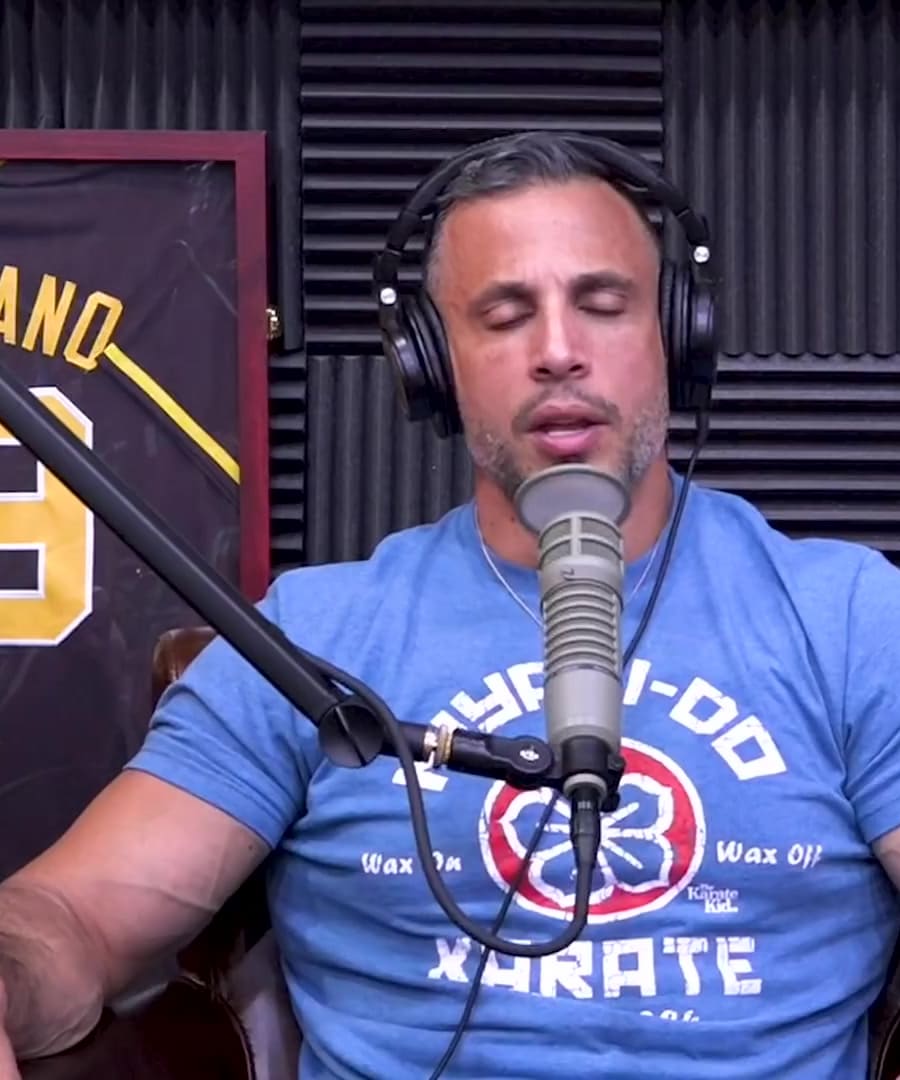How much fat should I be eating?
Sources:
The Mind Pump Podcast discusses dietary fat intake from varying perspectives and offers different recommendations. Here's a brief summary of what they've said on the topic:
-
General Health and Macronutrient Ratios: For general health, a respectable amount of fats is needed, with Stan Efferding mentioning about 30% of total calories. He also argues that going under 20% can compromise hormone functions, particularly testosterone 1. Sal Di Stefano recommends that fat should not go below 20% of total calories, cautioning against falling below 15%. When managing macronutrient distribution, users can adjust their intake using tools like mapsmacro.com to fit their specific needs 2.
-
Healthy Fats and Metabolism: When increasing healthy fats in the diet, it's common to experience favourable responses such as improved hormone profiles and metabolism. They emphasize that increasing healthy fat intake doesn't necessarily lead to weight gain; in some cases, people may even become leaner 3.
-
Fat to Support Muscle Gain: For muscle gain, tracking food intake and ensuring high protein consumption is key, with adjustments in fat and carb intake customized to individual preferences and needs 4.
-
Understanding Essential Fats: Essential fat is a necessity for the diet because your body can't produce essential fatty acids on its own. There's flexibility with the balance of carbs and fats after meeting your protein targets, with Sal suggesting that someone aiming for about 2,500 calories a day (given their size) might need around 70 grams of essential fat 5.
To sum it up, while protein is often prioritized for muscle building and overall diet, adequate fat intake is important for hormonal balance, overall health, and even metabolic function. Adjustments can be made based on individual goals, current diet, and how one’s body responds to changes in macronutrient intake.
RELATED QUESTIONS-
How many reps should I do in MAPS anabolic
Sources:
The MAPS Anabolic program from Mind Pump incorporates a variety of rep ranges to cater to different training goals like strength, hypertrophy, and muscle endurance:
-
Phase 1 focuses on lower rep ranges such as five reps or even singles, doubles, and triples, targeting strength. This phase can have a big impact, especially for beginners or those who haven't trained in this rep range consistently 1 2 3.
-
Higher Reps come into play in other phases where the goal is to chase the pump or hypertrophy. Training with reps exceeding 15, up to 20 or 25, can be beneficial in these scenarios 4.
-
The program is designed to take practitioners through a variety of rep ranges to prevent adaptation and ensure long-term progress. This approach avoids stagnation that can come from sticking to a single rep range for too long 5 2.
When following MAPS Anabolic, it is critical to adhere to the program as it's laid out, including prescribed rep ranges, rest periods, and exercise selection. This methodical approach aims to optimize muscle growth and strength gains over time.
RELATED QUESTIONS-
Tell me more about the different phases in MAPS Anabolic.
Sources:
The MAPS Anabolic program is structured into several phases, designed to target different aspects of fitness, ensuring continuous progression and preventing plateaus. Here's a breakdown of the different phases based on what has been discussed in various episodes of the Mind Pump Podcast:
-
Pre-phase: This phase is high-repetition training aimed at acclimating the body to weightlifting, perfecting form in foundational exercises, and addressing muscle imbalances. It's especially important for beginners or those returning after a significant break from resistance training or those with muscle imbalances 1 2.
-
Phase 1: Often referred to as a strength phase in MAPS Anabolic, it uses lower rep ranges to increase strength. Typically, the structure will consist of working out in a full-body manner three days a week 2 3.
-
Phase 2: Sometimes alluded to as a hypertrophy phase, usually involving moderate rep ranges to focus on muscle size and endurance. These rep ranges are designed to stimulate muscle growth through higher volume and time under tension 1.
-
Phase 3: This phase potentially features higher rep ranges and is more focused on muscular endurance and achieving a muscle pump. This is when the volume gets turned up, and you're trying to maximize the muscle-building potential from the foundation you've built in the earlier phases 1.
-
Bridge Programs: In scenarios where you cannot follow the program as prescribed due to limitations such as space or equipment, programs like MAPS Anywhere can serve as a bridge between phases of MAPS Anabolic. The program can be adapted according to your specific situation, and you can return to a previous phase if necessary before progressing further 4.
The general progression from starter to fully implementing different MAPS programs is evident 5. Starting with a foundational program like MAPS Anabolic, followed by MAPS Performance, and then MAPS Aesthetic, offers a comprehensive approach to overall fitness and physique development, with each phase building upon the last. Remember, the pacing of these phases will depend on individual progression, adaptation, and readiness to advance toward more complex routines 3.
RELATED QUESTIONS-
How long does it take to see results from MAPS anabolic
Sources:
Based on what the Mind Pump Podcast has discussed, results from MAPS Anabolic can vary significantly depending on the individual's consistency with the program, nutrition, recovery, and individual body response to training. However, they have repeatedly emphasized that consistency and following the program as designed are key factors in seeing progress.
Typically, most people can expect to see noticeable changes within the first month or two of consistent training on a program like MAPS Anabolic, experiencing what is often called "newbie gains." The body tends to respond well to the novel stimulus of strength training, especially if someone is relatively new to it 1.
However, after the initial response period, the program is designed with phased cycles to keep the body adapting and, assuming all other aspects of health and recovery are addressed, one could theoretically continue making progress for a couple of years on MAPS Anabolic by cycling through the different phases 1. Additionally, if someone has been inconsistent or is returning to training after a break, revisiting MAPS Anabolic is beneficial even for advanced individuals to regain lost volume and to see significant change 2.
Sal Di Stefano, a co-founder of Mind Pump Media, has also mentioned that after two or three cycles of MAPS Anabolic, it may be beneficial to switch to a completely different program to continue seeing progress, as the body might adapt to the stimulus provided by the MAPS Anabolic cycles 1.
For the best personalized response in terms of how long it will take to see results from MAPS Anabolic specifically for you, it's recommended to listen to your body, be consistent with the program, and adjust as needed based on your individual progress.
RELATED QUESTIONSWhat are trigger workouts
Sources:
Trigger workouts, also known as trigger sessions, are a key concept discussed in the Mind Pump Podcast. Sal Di Stefano cites them as one of the most revolutionary training techniques from their MAPS Anabolic program 1. Trigger sessions are short, low-intensity workouts that are about 5 to 10 minutes long, typically done on off days from your primary workouts 2. The aim during these sessions is to achieve a light muscle pump using resistance bands or lightweight exercises, not to induce fatigue 3.
You would perform these mini-workouts two to three times throughout the day, focusing on sending a more frequent muscle-building signal without causing undue fatigue. This strategy can increase the frequency of the muscle stimulation, helping with muscle growth and recovery without impeding recovery from your primary workouts 4.
Trigger sessions have been suggested as particularly beneficial during a cutting phase to help maintain muscle mass 5. When consistently incorporated, many people notice improvements in muscle shape, fat loss, and overall energy 6.
The idea behind trigger sessions is not necessarily to switch up the exercises often since the goal is more about maintaining the signal and aiding recovery, not about muscle confusion or varied stimulus 3. They can be beneficial both for muscle gain and fat loss, especially when time constraints make longer workouts challenging 6.
RELATED QUESTIONSDoes maps anabolic train abs
Sources:
The MAPS Anabolic program does incorporate ab training. In a discussion about maintaining a beach body and phasing a full-body workout program, Sal Di Stefano mentioned that a summer fitness special included both the MAPS Anabolic program and the "No BS Six Pack Formula," which seems to suggest that the latter may focus on core work. These two programs were designed to be combined, indicating that ab training would be a part of the comprehensive MAPS Anabolic program 1.
However, none of the retrieved clips directly mention how abs are trained within the MAPS Anabolic program itself. Further details would be in the programming guidelines specific to MAPS Anabolic or the "No BS Six Pack Formula."
RELATED QUESTIONSBefore and after photos
Sources:
The Mind Pump Podcast has discussed before and after photos in the context of the fitness industry, highlighting skepticism about their authenticity and effectiveness. In episode 1717, titled "Why Before & After Pictures Are Bullsh*t," the hosts, , , and discussed various issues related to these transformation photos 1 2 3 4 5 6 7 8.
- They mentioned that some supplement companies have used doctored before and after photos for marketing purposes 1.
- The hosts noted that before and after photos are a powerful attention-grabbing tool but can create false expectations for people as they don't tell the whole story of an individual's journey 2.
- They discussed how the use of lighting and getting a good pump can drastically change the appearance of one's body within a day, which can lead to misleading before and after portrayals 3.
- The hosts affirmed that psychological factors make before and after photos very effective in marketing due to their visual nature and the ability to relate to the transformation 7.
- They expressed concern that these photos can play into individuals' insecurities by making unfair comparisons 8.
The general consensus among the hosts is that before and after photos, while effective for marketing, may not always represent a truthful or healthy fitness journey. They emphasize the importance of understanding each individual's unique journey and the varied results people will see from any fitness or health program.
RELATED QUESTIONSExplain the No BS Six Pack Formula.
Sources:
The No BS Six Pack Formula is a program developed by that focuses on building the core muscles, including the abdominal muscles. The idea is that by increasing the size and strength of these muscles, you can have visible abs, even at higher body fat percentages, as the core muscles will protrude more. Here are some key points mentioned in various episodes:
- The program emphasizes the importance of full range of motion and resistance training to build the most muscle and produce the best results 1.
- Sal experimented with his training approach and found that building his core in a similar way to how one might work other body parts resulted in a substantial transformation, allowing for visible abs at relaxed states and higher body fat percentages 1.
- The No BS Six Pack Formula is often paired with other Mind Pump programs like Maps Anabolic, and they are designed to be worked together effectively 2 3 4.
- The program has been offered as part of various promotional deals and giveaways on the podcast, indicating its value within their catalog of fitness programs 2 3 4 5 6.
Listeners have been encouraged to incorporate the foundational workouts and trigger sessions from the No BS Six Pack Formula within their fitness routines, for example by alternating them with foundational workouts from Maps Anabolic 4. The overarching goal of the No BS Six Pack Formula is to help users build more visible abs, which doesn't require them to reach extremely low body fat levels to see definition 4.
RELATED QUESTIONSHow sore should I be after a workout
Sources:
After a workout, muscle soreness can be expected, but the level of soreness should not be extreme or debilitating. Here are some points mentioned on the Mind Pump Podcast:
- Soreness should generally last no longer than a day or two. If you're consistently sore for more than two days, you likely did too much 1.
- Feeling hardly any soreness while experiencing strength gains indicates you've found a great balance of progressive overload 2.
- Soreness to the touch or movement-induced pain, and soreness that affects performance in your next workout, suggests you've overdone it 3.
- Ideally, you should experience either no soreness or a subtle kind that you have to search for, which feels more like a tightness rather than an ache 4.
- The soreness that impairs your normal daily activities, or makes you feel excessively fatigued and drained, is a sign you need to reduce the intensity of your workouts 5.
If you are making progress with your strength and mobility without significant soreness, this is a good indicator your workout intensity is appropriate. Overdoing it and chasing soreness as a marker of a good workout can actually hinder your progress rather than help 4. It is important to listen to your body and adjust your workouts accordingly to avoid overtraining and allow adequate recovery for muscle adaptation.
RELATED QUESTIONSHow do I prevent overtraining during my workouts?
Sources:
To prevent overtraining during your workouts, here are some strategies and insights shared by the Mind Pump hosts:
-
Prioritize Sleep: Ensure you're getting adequate rest by setting a sleep routine and reducing exposure to bright lights or screens before bedtime 1.
-
Recognize Overtraining Signs: Pay attention to frequent injury, chronic pain, and a general decline in performance, which indicate possible overtraining 2.
-
Gradual Training Progression: Avoid ramping up intensity, volume, or frequency too quickly. Build up to higher volumes of training gradually, over time 3.
-
Individual Approach: Understand that overtraining is specific to individuals. Adjust training based on personal recovery ability, stress levels, nutrition, and sleep 4.
-
Reduce Intensity: If you suspect overtraining, reduce the intensity before reducing volume and frequency. Manage the intensity by moderating the difficulty of your exercises 5.
-
Follow Structured Programs: Use established workout programs, like Maps Anabolic, which are designed to avoid overtraining by emphasizing proper progression 6.
-
Monitor Recovery: Be mindful of your recovery status, using heart rate monitoring or lactate threshold tests, to prevent overreaching 7.
-
Avoid the Overtraining Threshold: Maintain fitness readiness by training below the limit of overtraining, especially in high-stress jobs or environments 7.
It's crucial to prioritize recovery, listen to your body, and make necessary adjustments when any signs or symptoms of overtraining are noticed. This helps maintain a balance between exercise stress and recovery to ensure long-term progress and health 8.
RELATED QUESTIONS-
What are the specific signs of overtraining to look out for?
Sources:
Specific signs of overtraining to be mindful of include:
- Lingering Achiness and Stiffness: Persistent discomfort or pain in the joints; muscle strains that do not improve and require extensive warm-ups before workouts 1.
- Decreased Performance: Declining strength, stamina, or overall performance during workouts. If you notice you're lifting less weight or feel weaker than usual, it could indicate overtraining 2.
- Frequent Injury or Chronic Pain: A surge in injuries or ongoing pain, which can be a sign that your body is not recovering adequately 3.
- Poor Sleep Quality: Experiencing restless sleep or waking up frequently throughout the night, and feeling exhausted but unable to achieve deep sleep 4.
- Mood Changes: Feeling more irritable, anxious, or depressed than usual as a response to overtraining stress 3.
- Constipation: Digestive issues such as bloating and constipation may indicate overtraining, particularly in women 5.
- Skin Changes: Women, in particular, may notice less plush, drier skin, or a more aged appearance when overtraining 5.
These symptoms may not all present simultaneously, and some individuals may be more susceptible to certain signs than others. It's essential to monitor these signs and adjust your exercise routine accordingly to prevent further physical and mental strain due to overtraining.
RELATED QUESTIONSWhat are the steps for recovery from overtraining?
Sources:
Sex drive
Sources:
The Mind Pump Podcast addresses the topic of sex drive from various angles, including its connection to overall health and wellness, the impact on physical training, the stigma around testosterone therapy in women, and even societal implications. Below are some key insights on the topic:
-
Connection to Overall Health: Your sex drive can be indicative of general well-being, with a healthy libido reflecting a balanced lifestyle. Sex drive observations should not be singularly focused on frequency but rather on whether it negatively dominates or is absent from your thoughts and actions 1.
-
Impact of Testosterone: Testosterone levels can influence sex drive in both men and women. In men, identifying low testosterone can help in understanding changes in libido. Women can also suffer from low testosterone and may benefit from therapy to enhance libido, energy, and body composition changes. However, there's a stigma about treating women with testosterone due to concerns about masculinization 2.
-
Influence on Exercise: Sex drive can affect lifts and overall feelings in the gym. Good sexual health may correlate with an improved quality of life and even exercise performance. Conversely, overtraining can lead to a reduction in sex drive, among other issues 3.
-
Boosting Libido Strategies: The podcast discusses ways to boost sex drive, including a specific episode dedicated to this topic. They mention the Maps Anabolic program as being beneficial for increasing libido through strength training 4.
-
Evolution and Monogamy: A discussion on the natural evolution of human sexuality and the benefits of monogamy touched upon the importance of boundaries. There's a suggestion that our bodies and relationships may thrive within clearly set limits, with monogamy potentially offering such structure 5.
-
Stigma and Communication: The stereotype that men are always eager for sex was discussed, highlighting the importance of communication and understanding within relationships. Testosterone levels can play a role in sexual desire and addressing this can help couples work through any issues related to libido 6.
It's evident that sex drive is a multi-faceted issue that ties into physical, emotional, and social well-being. Mind Pump encourages an understanding of how libido interacts with other aspects of health and fitness.
RELATED QUESTIONS-
What are the specific signs of overtraining to look out for?
Sources:
The signs of overtraining as discussed on the Mind Pump Podcast are varied, and it's crucial to pay attention to them to ensure you maintain optimal performance and recovery. Here are several key signs the hosts and guests on the podcast have mentioned:
- Lingering achiness and stiffness, especially in the joints, which don't seem to improve and require more warm-up and stretching before workouts 1.
- Decreased performance, such as struggling with previously manageable weights or a noticeable drop in endurance or stamina 2.
- Frequent injuries or chronic pain, suggesting that one might be pushing beyond their recovery capacity 3.
- Poor sleep or insomnia, where one might experience restless sleep despite being tired, which might indicate a high stress response 4.
- Changes in mood and energy levels, including feelings of persistent fatigue or lowered motivation 5.
- Disrupted digestion, like constipation or bloating, which might accompany intense training combined with a low-calorie diet 6.
- Appetite changes, such as a decreased appetite or strong cravings for hyper-palatable or processed foods 7.
- Temperature intolerance or feelings of being unusually hot or cold, as well as general feelings of being worn down or inflamed 7.
The hosts often emphasize that overtraining can be contextual and individual, and it's important to be honest with oneself about these signs. When multiple signs are present, it often strengthens the case that one might be overtraining. If experiencing symptoms like these, the hosts generally suggest pulling back on training intensity or volume to allow the body to recover properly.
RELATED QUESTIONSCreatine
Sources:
Creatine is a highly researched supplement celebrated for its numerous benefits in health and fitness. Here's a summary of its benefits and usage as discussed on Mind Pump Podcast:
- Creatine Synthesis: Your body can synthesize creatine through amino acids like methionine. Animal sources like fish, beef, eggs, turkey, and chicken provide dietary creatine 1.
- Cognitive Benefits: Creatine supplementation can offer a cognitive boost, particularly for those with a deficit from not eating creatine-rich foods, such as vegans 1 2.
- Performance Enhancement: It replenishes ATP (adenosine triphosphate) at a faster rate, which benefits a wide range of activities, from endurance sports to strength training 3.
- Health Supplement Benefits: Creatine offers health advantages, including muscle building, improved recovery, potential fat loss, heart and liver health benefits, and neurological support for conditions like Alzheimer's and Parkinson's 4.
- Muscle and Strength Gains: Users typically notice increases in strength and muscle fullness, as well as slight weight gain due to intracellular hydration – not body fat 3.
- General Health: For overall health, cognitive function, heart health, organ support, and mitochondrial function, creatine proves to be beneficial 5.
- Supplemental Form: Creatine monohydrate is the most studied and recommended form of creatine. It's generally advised to ignore other marketed forms as no studies support their superiority 3.
- Cooking Recommendations: Creatine monohydrate is often recommended for its ease of mixing, and some choose micronized forms for easier digestion 6.
If you consider introducing creatine to your regimen, the recommended dosage starts at 3-5 grams per day, and increasing to up to 10 grams for specific cognitive benefits might be useful 5. However, always consult with a healthcare professional before starting any new supplement.
RELATED QUESTIONSCan you tell me more about the health benefits of creatine?
Sources:
The Mind Pump Podcast discusses creatine's numerous health benefits beyond its known role in muscle strength and performance. Here's a summary including some quotes from the hosts and their guest, :
- General Health: Creatine is praised for its myriad health benefits, such as improving heart health, liver function, reducing depression, and providing better energy 1.
- Cognitive Performance: Creatine supplementation shows a cognitive boost, especially in populations like vegans who don't consume creatine-rich foods such as meat. It can lead to sharper thinking and even elevated IQ scores 2.
- Mitochondrial Health: It can improve the health of mitochondria, which has implications for aging, cancer risk, and overall well-being 3.
- Bone Density & Testosterone: Suggested potential benefits also include possible improvements in bone density and natural testosterone production 2.
- Muscle Protein Synthesis: It helps to accelerate muscle protein synthesis over the long term, contributing to solid muscle growth 4.
- Mental Health: Creatine is reported to have antidepressant effects, with studies showing mood improvements when it is consumed 1.
- Neurological Disorders: There's evidence of beneficial use of creatine in treatments for neurological disorders such as Alzheimer's and Parkinson's 5.
- Antioxidant Properties: Creatine exhibits antioxidant properties that may be useful in promoting general health and reducing oxidative stress 6.
- Aging & Overall Health: It's expected to transition from a fitness to a wellness supplement due to its extensive benefits and applications for overall health 6.
The Mind Pump hosts and their guests often reiterate that creatine is an excellent supplement for a wide array of health and performance goals 7. However, like with any supplement, individuals should consult with healthcare professionals before beginning creatine supplementation, especially considering varying needs and potential contraindications like the discussed risk of hair loss with creatine use in some men 6.
RELATED QUESTIONS
